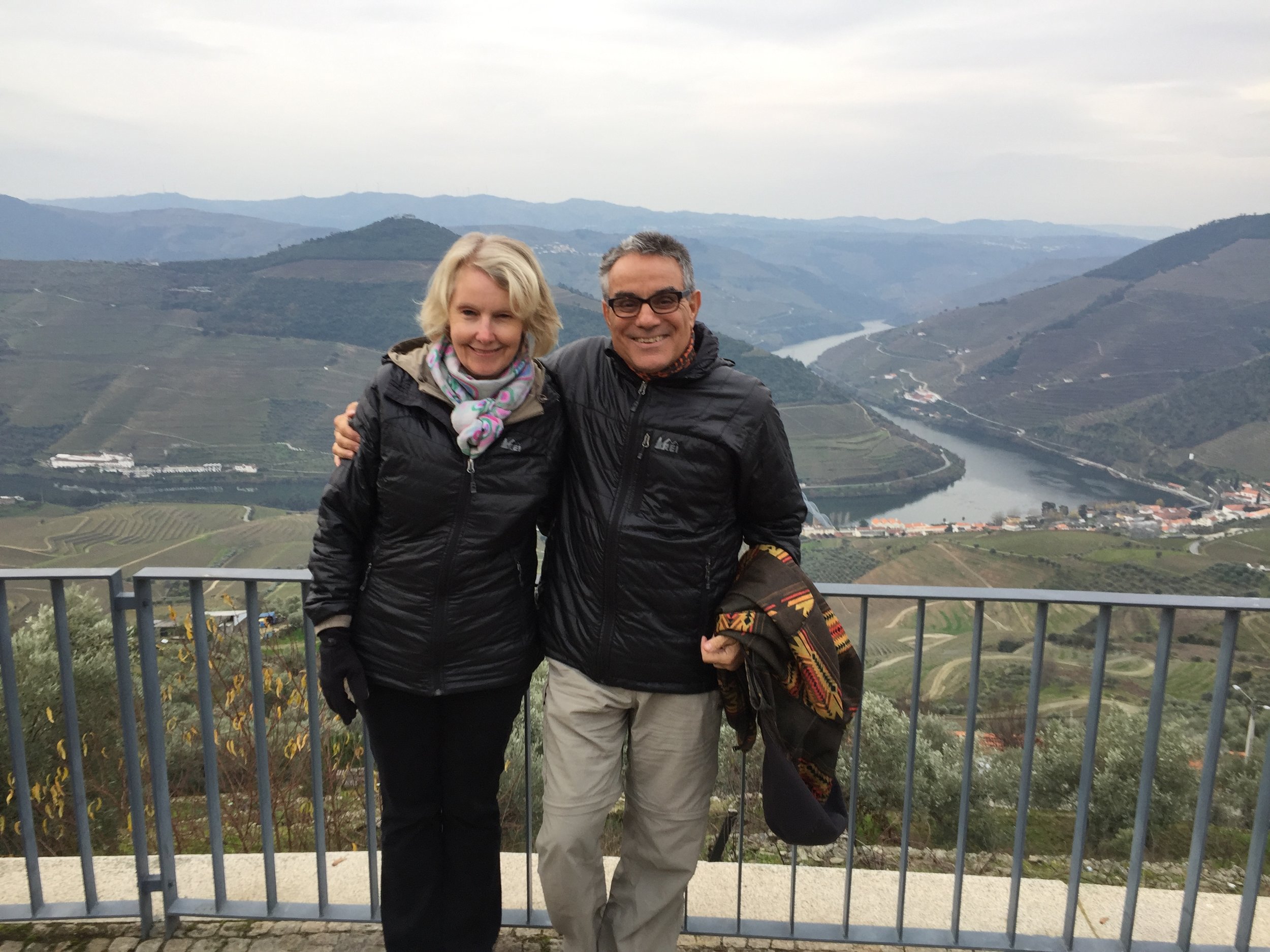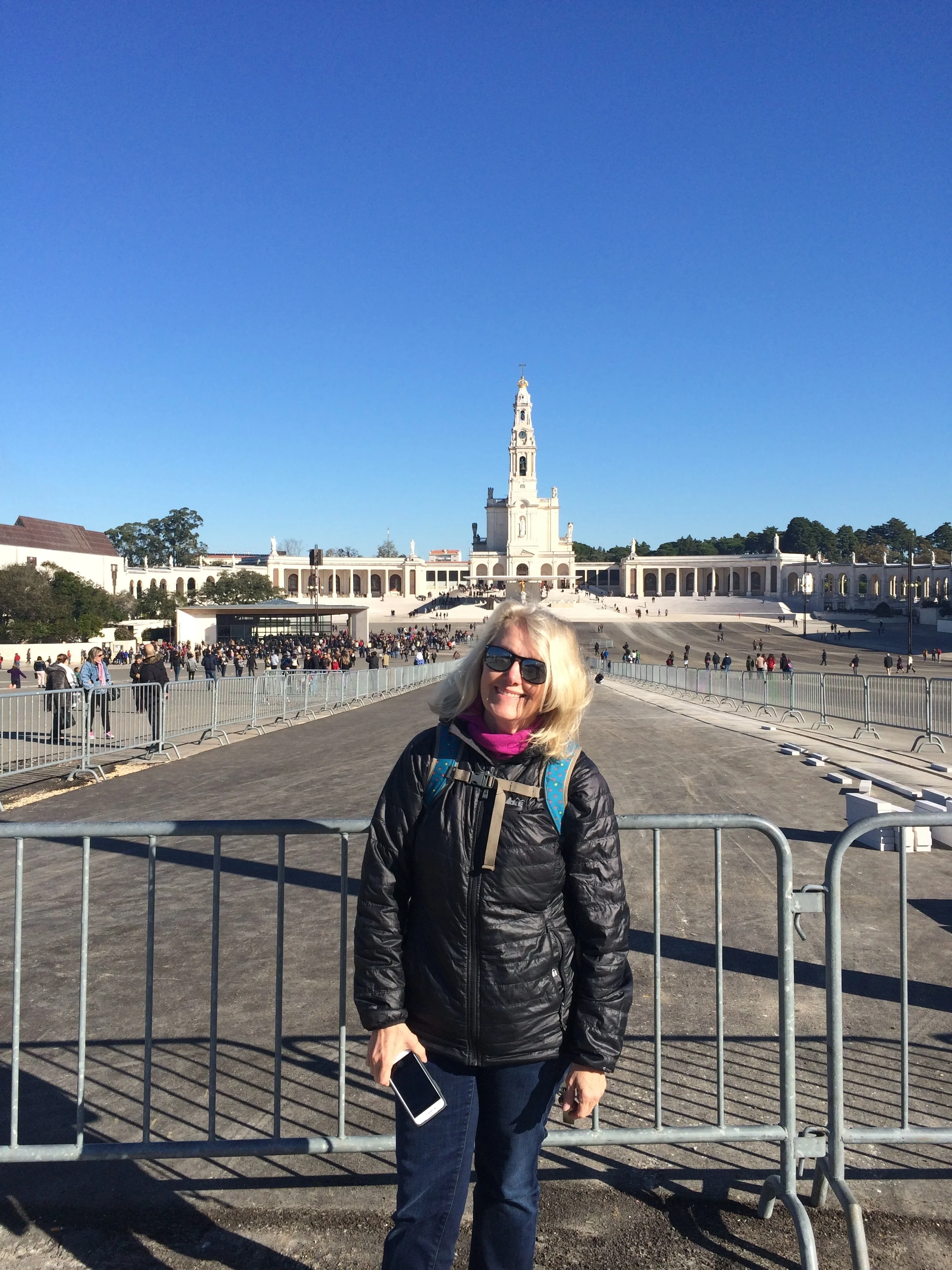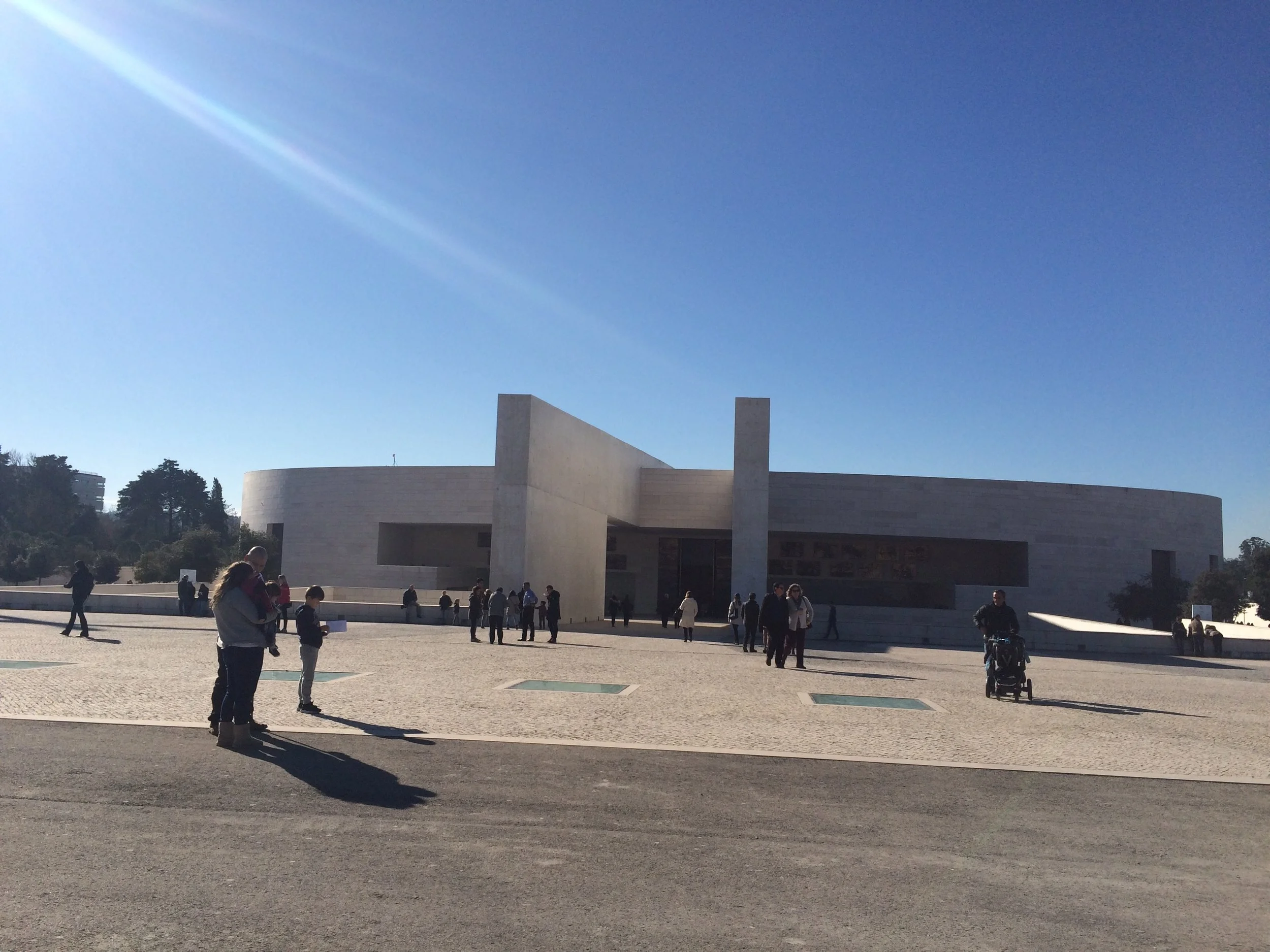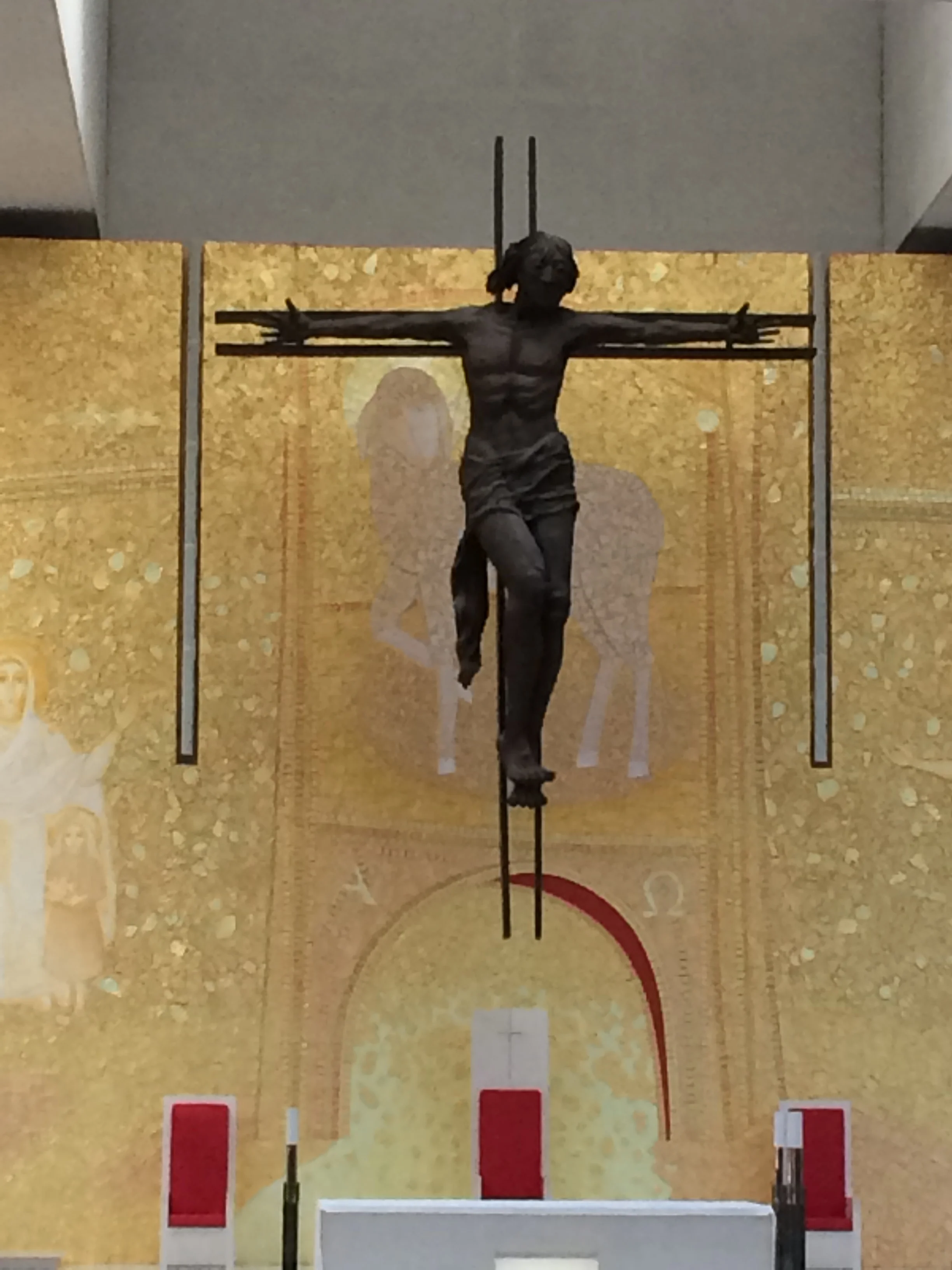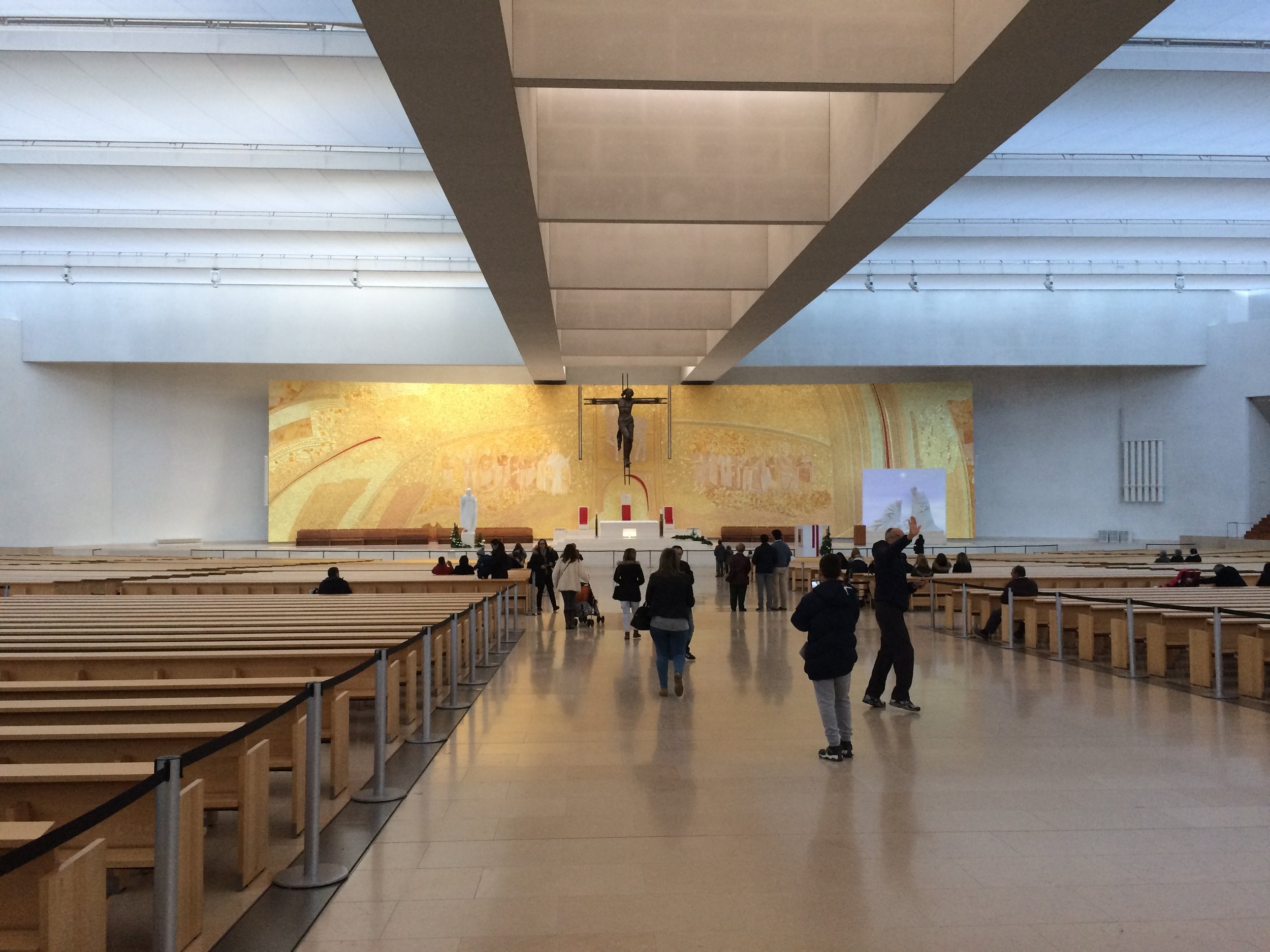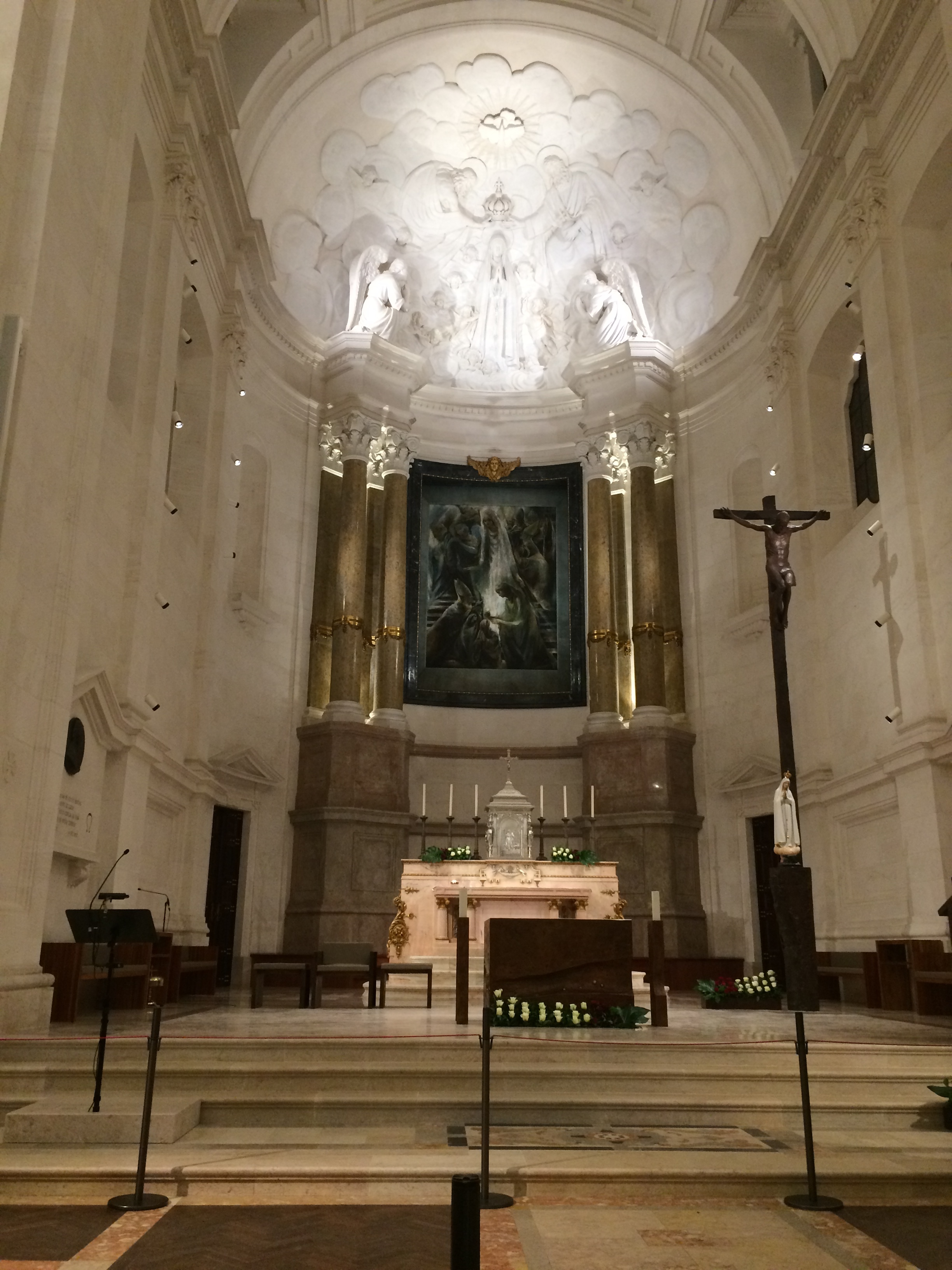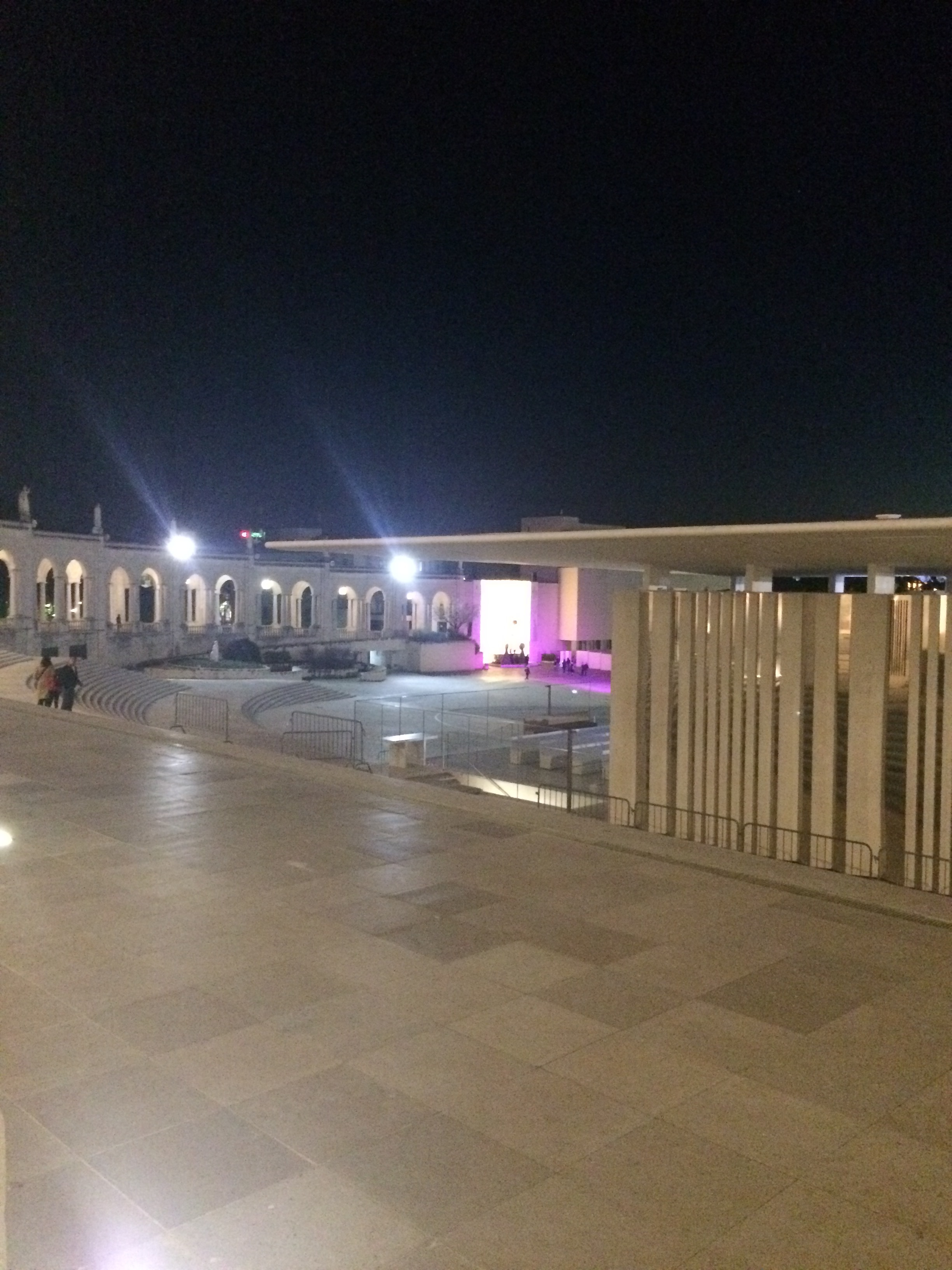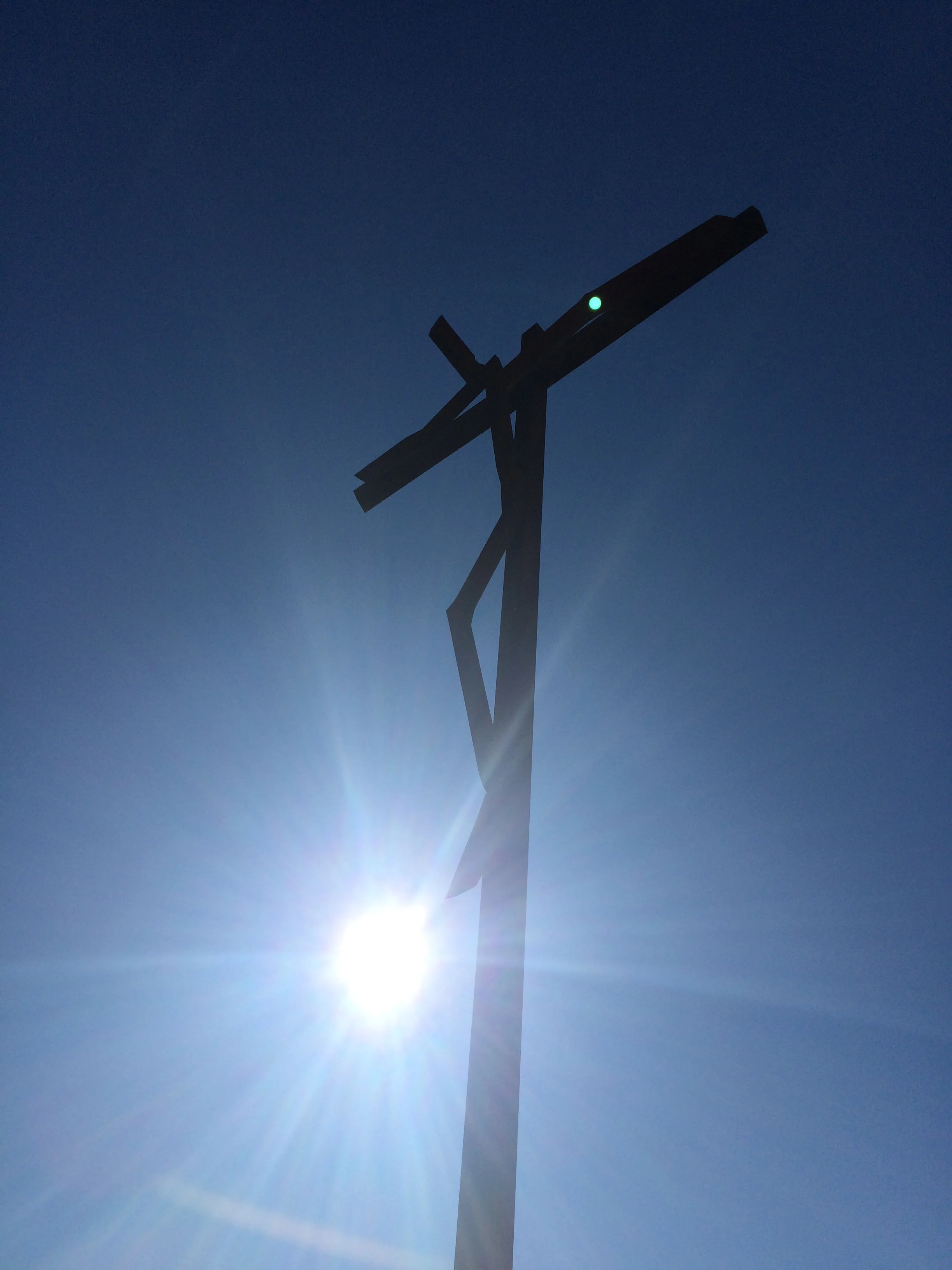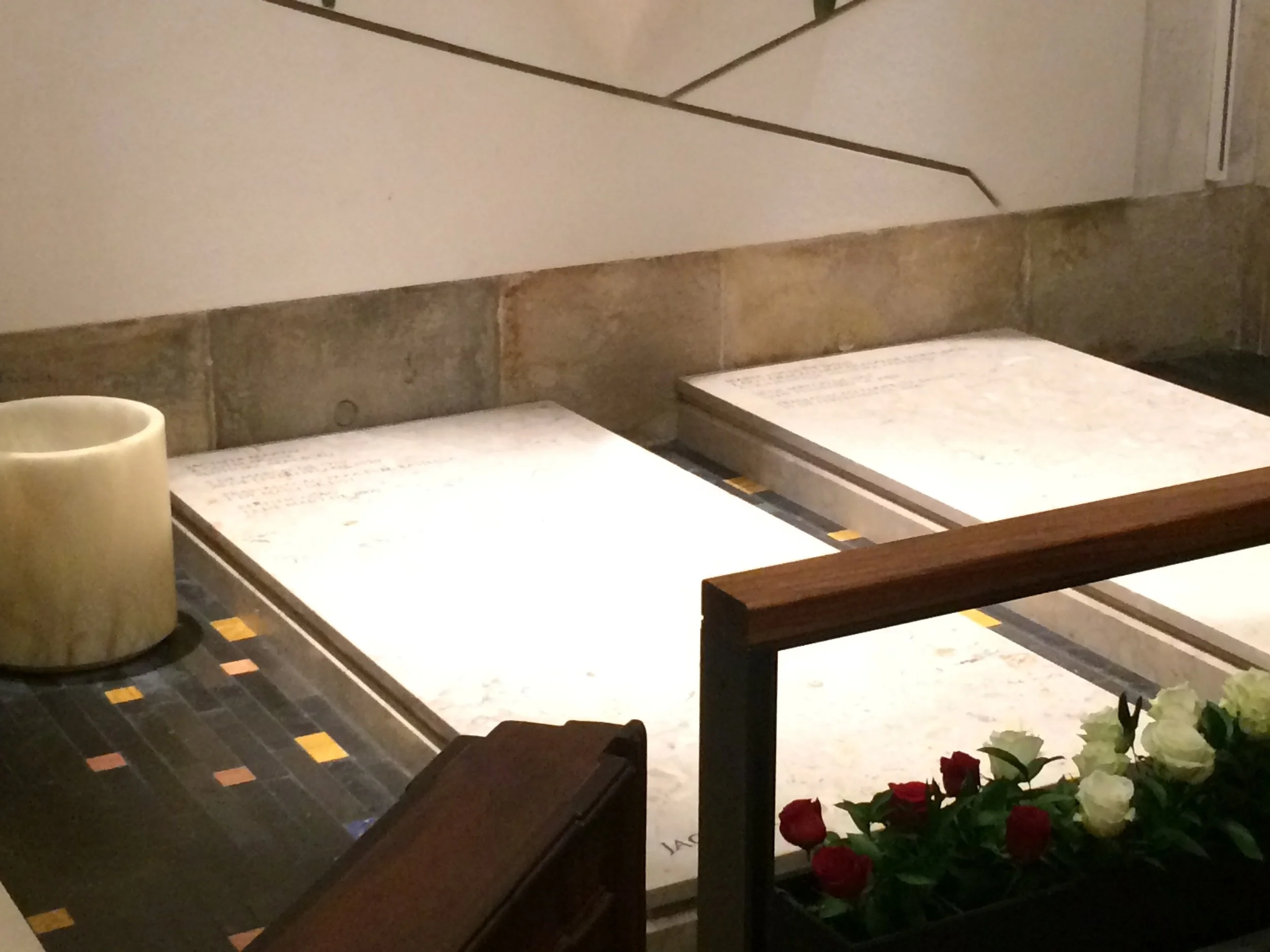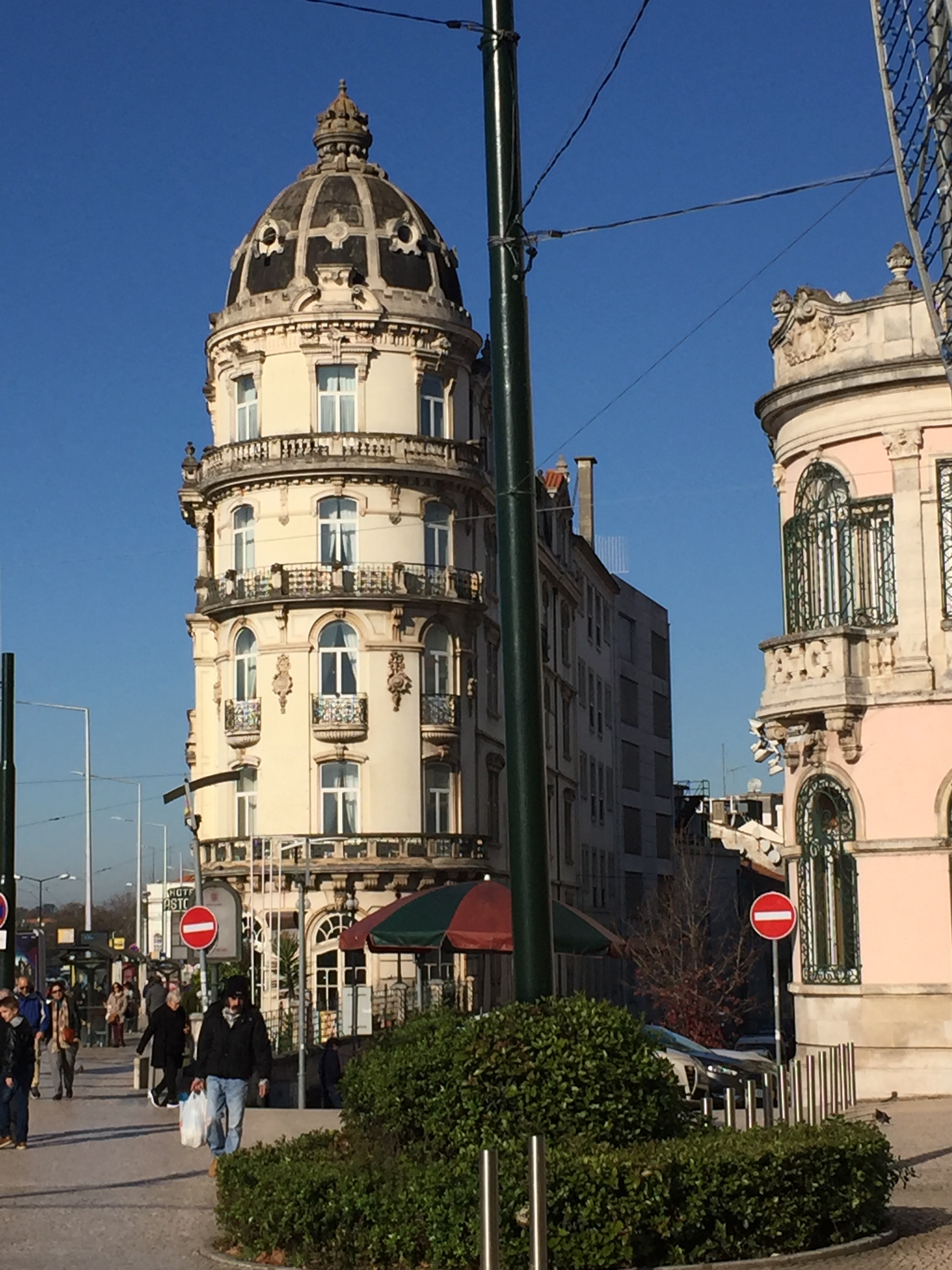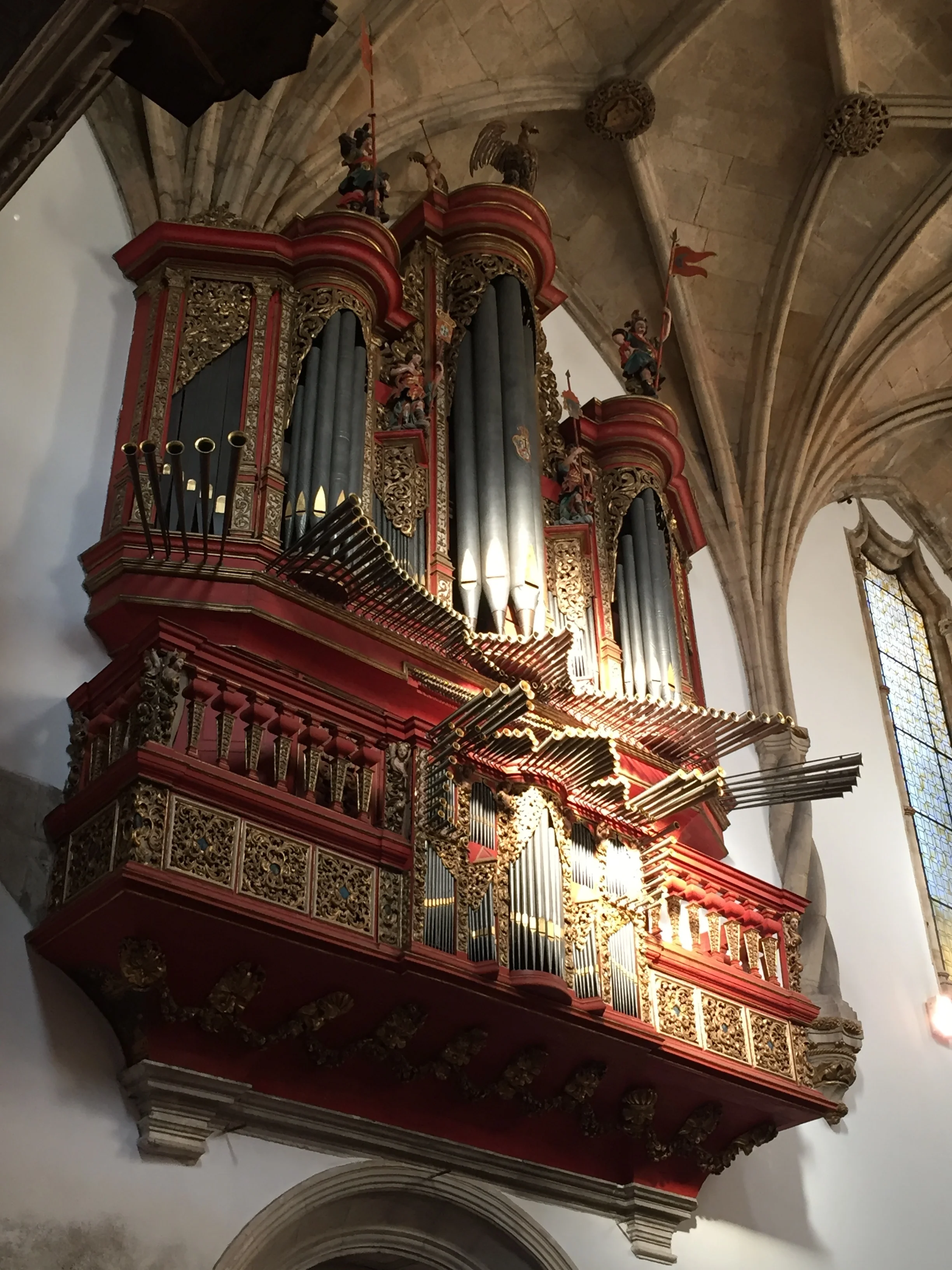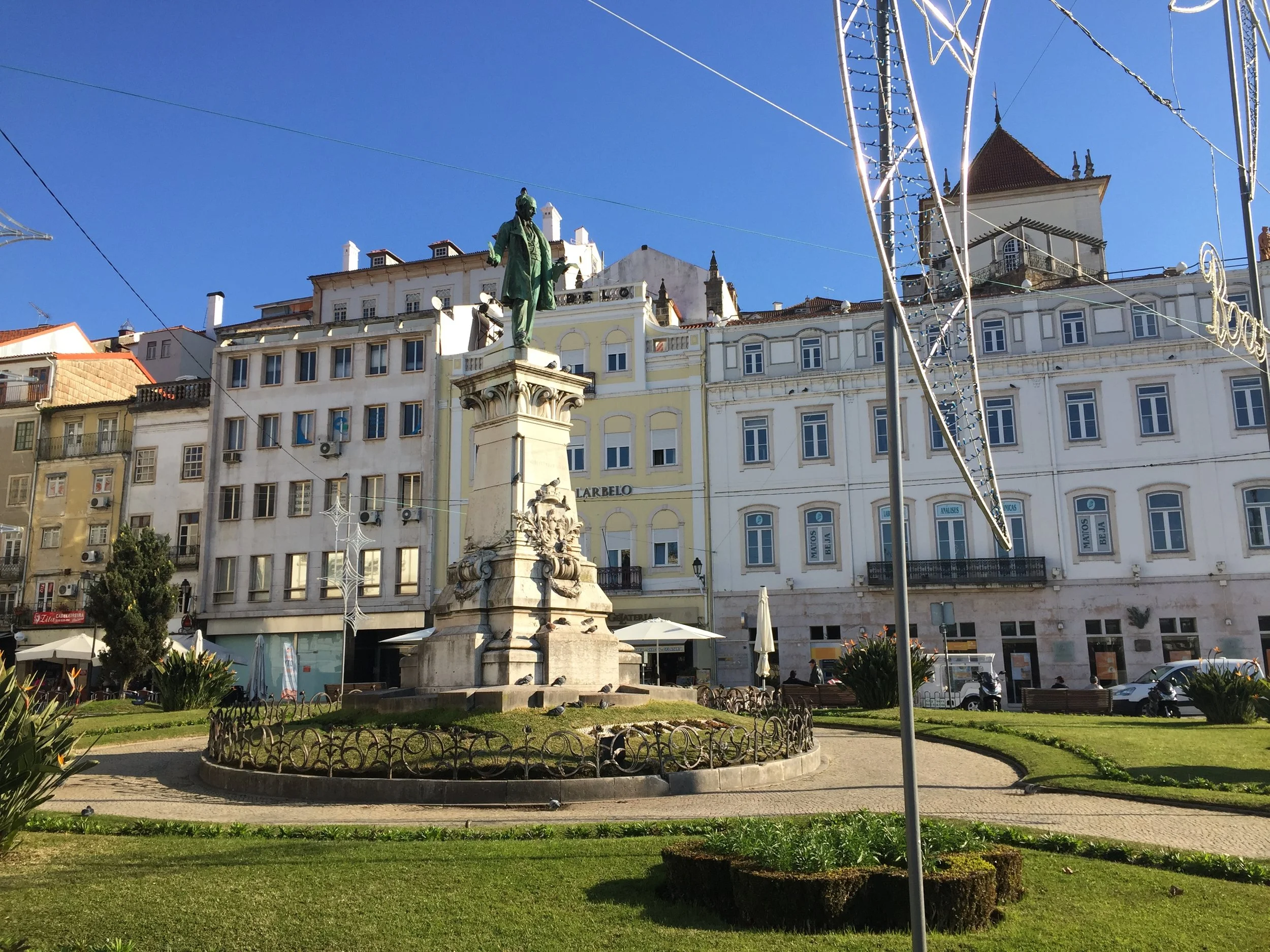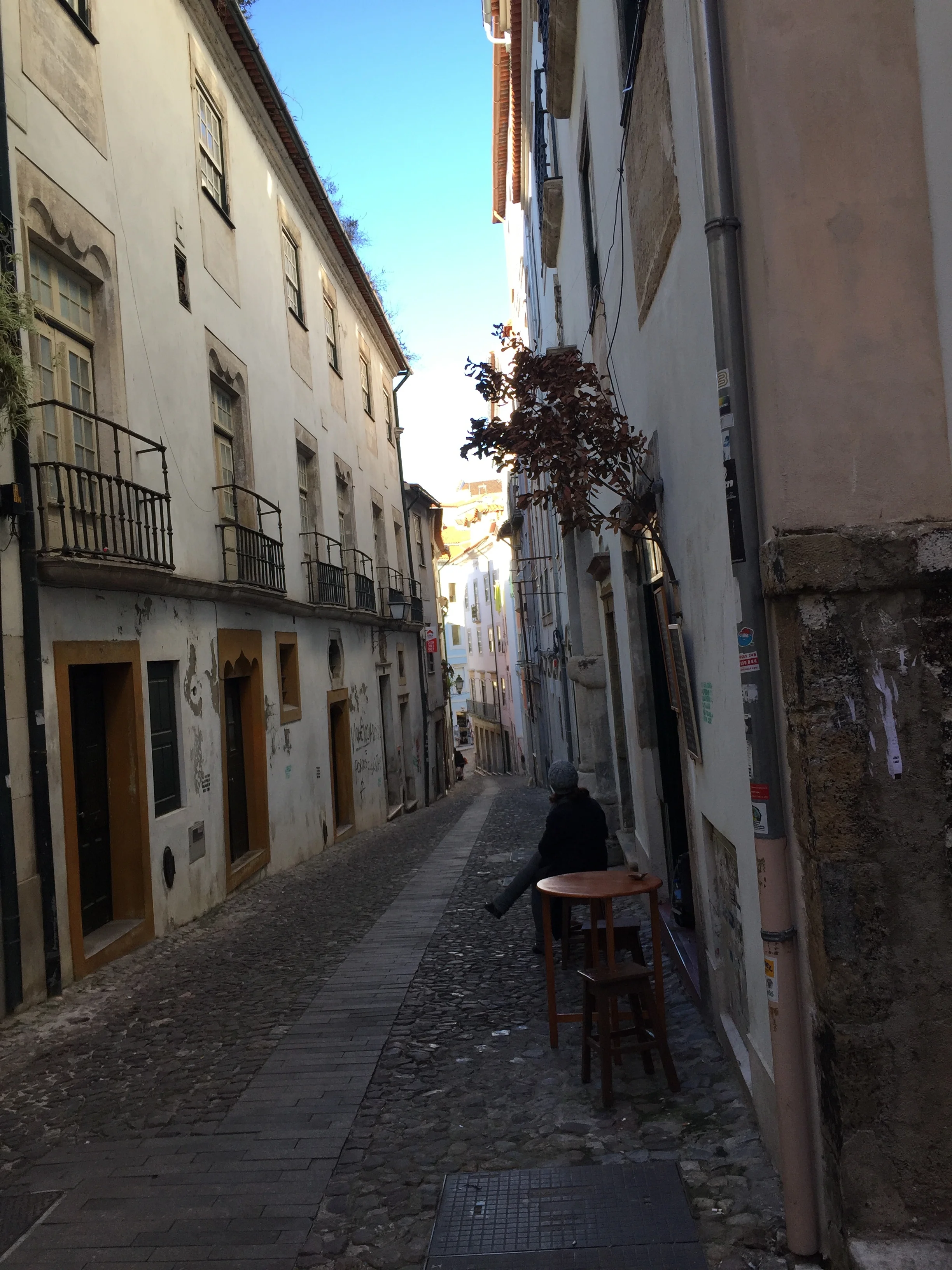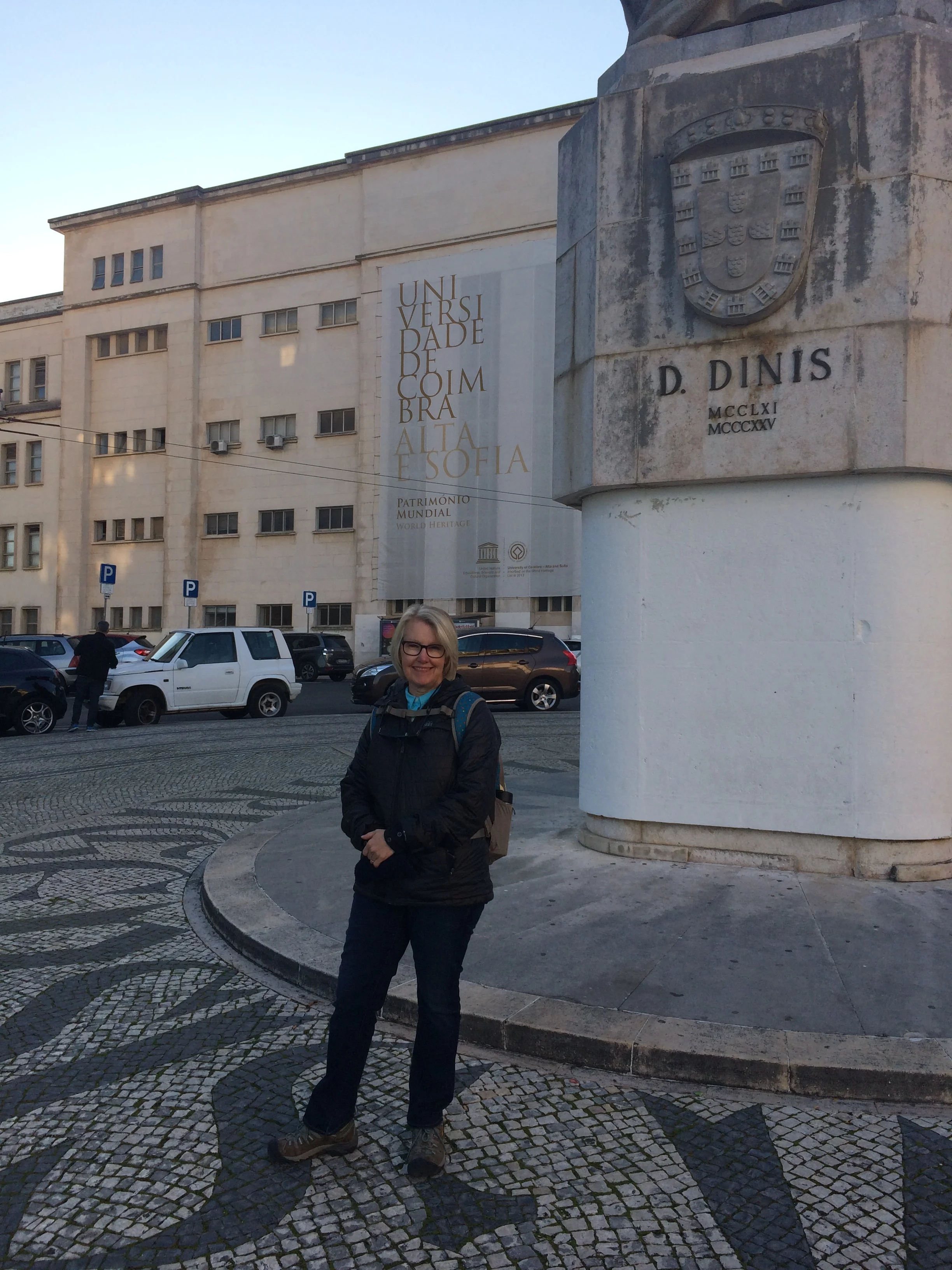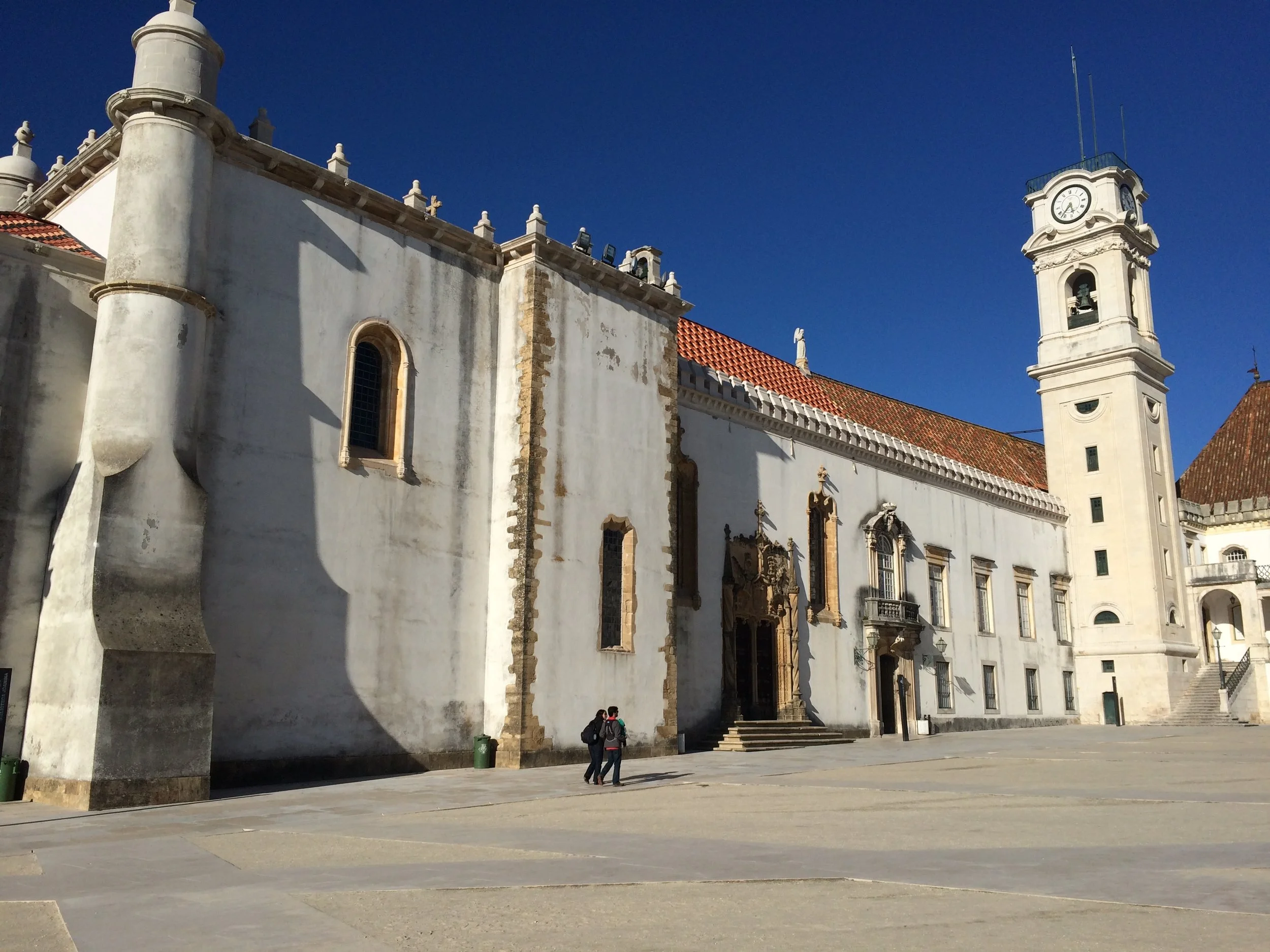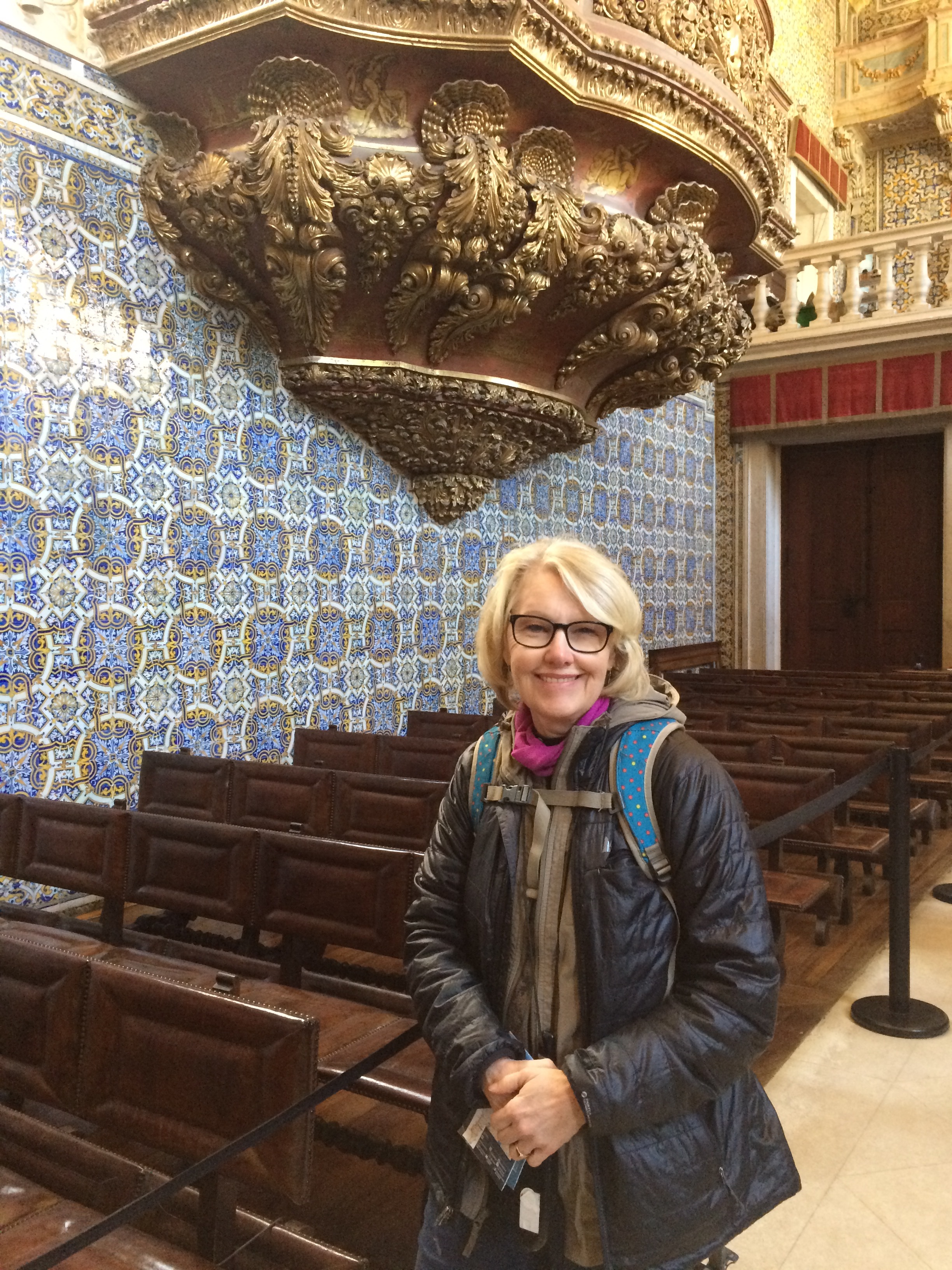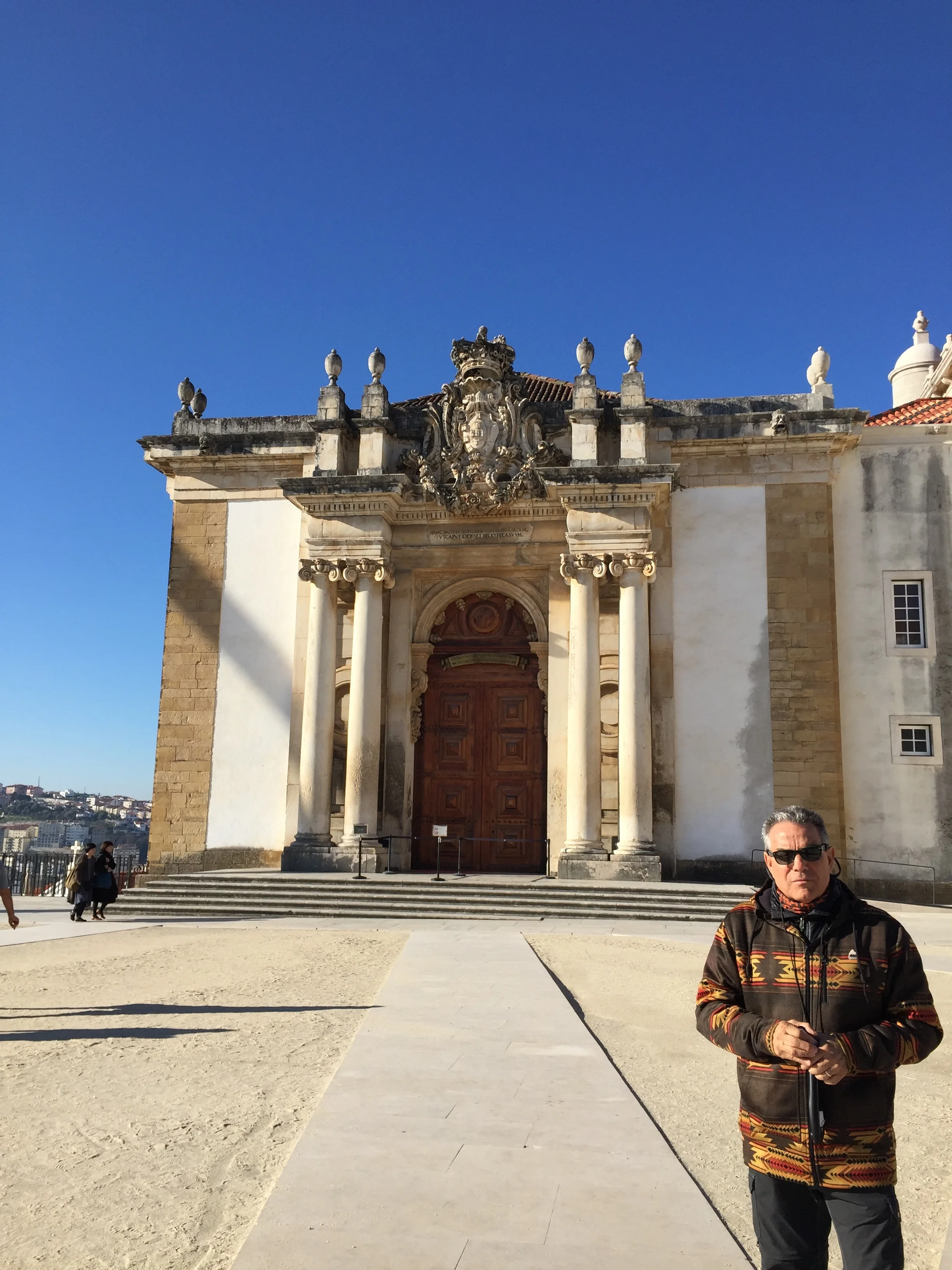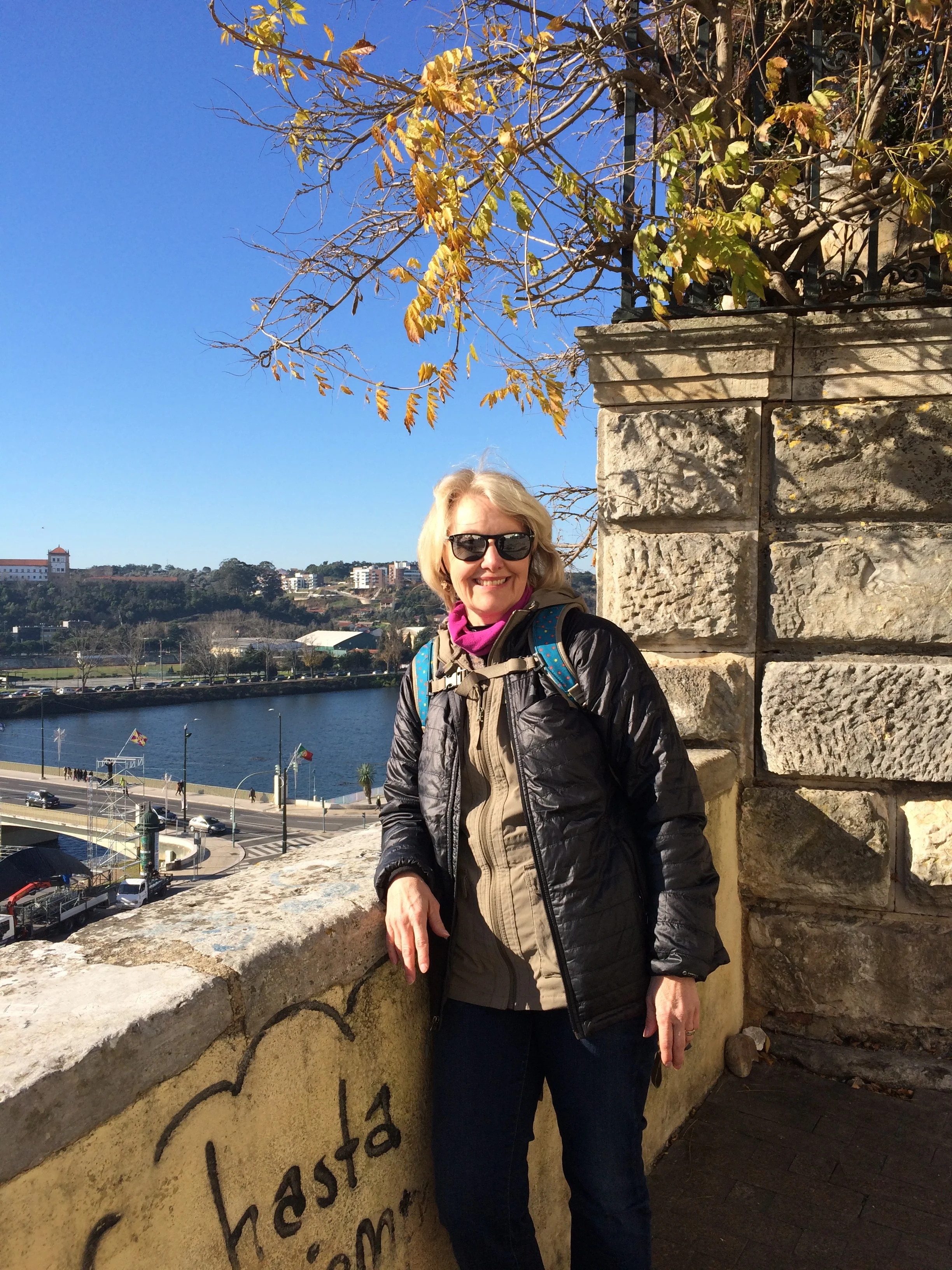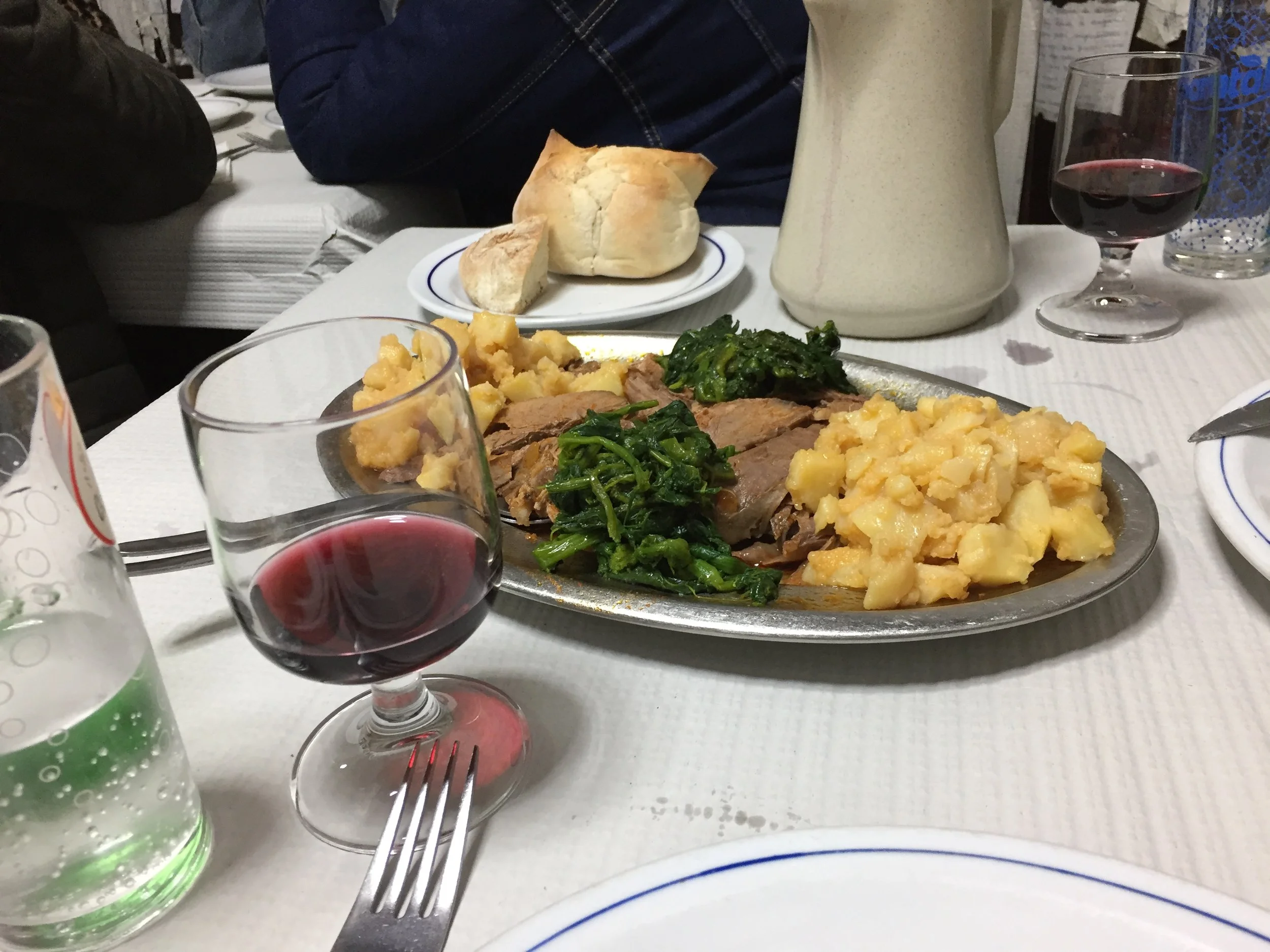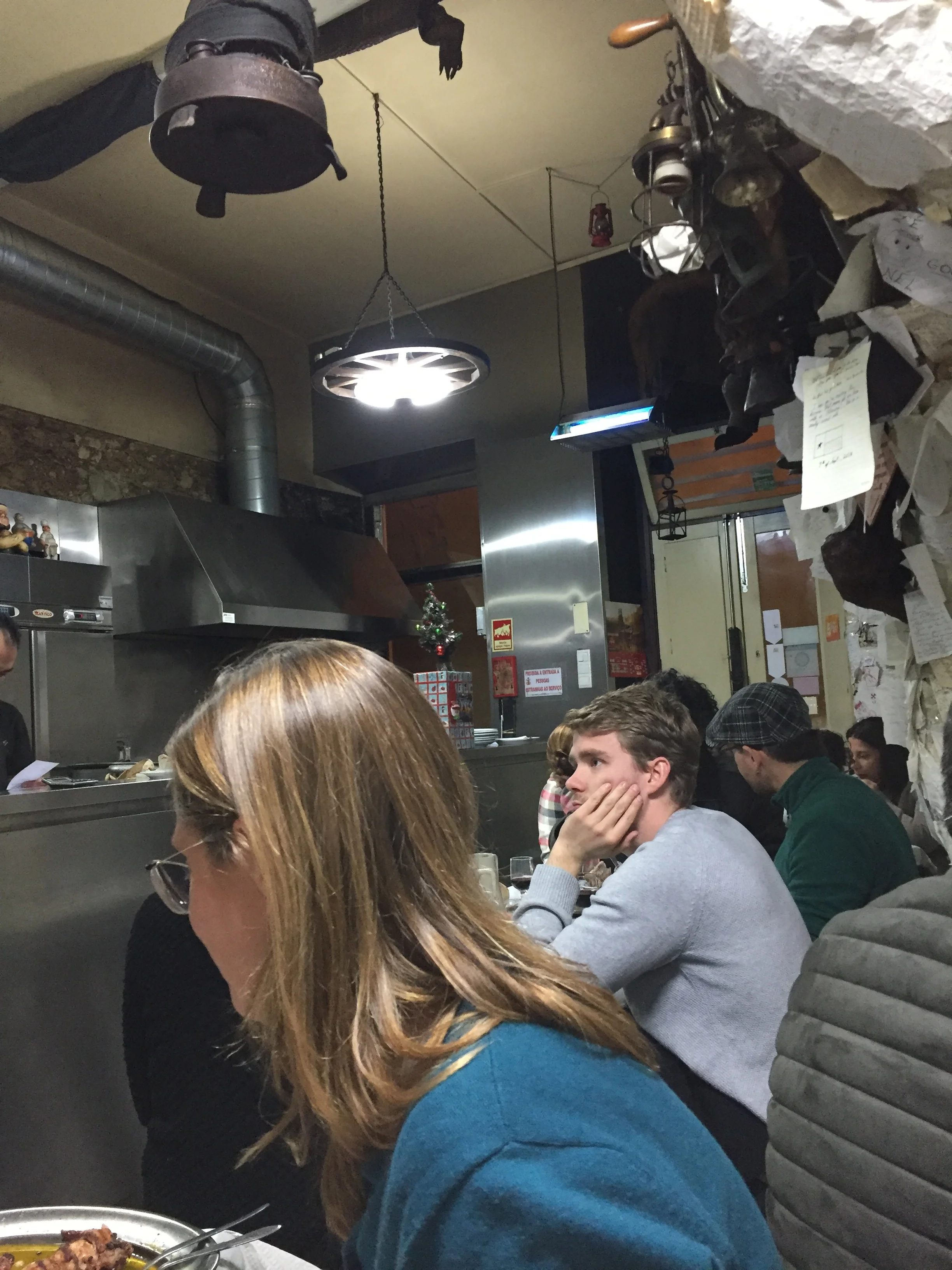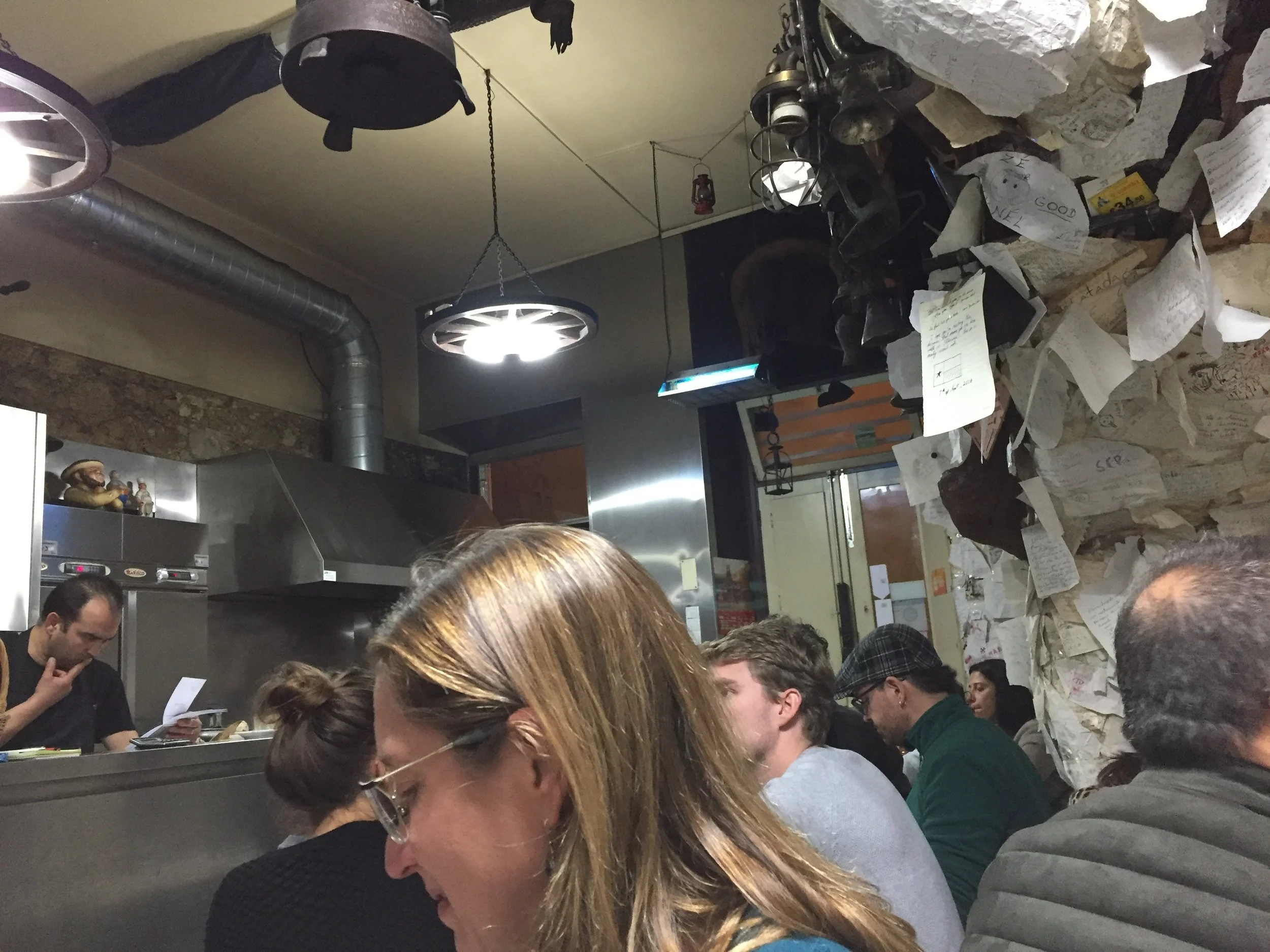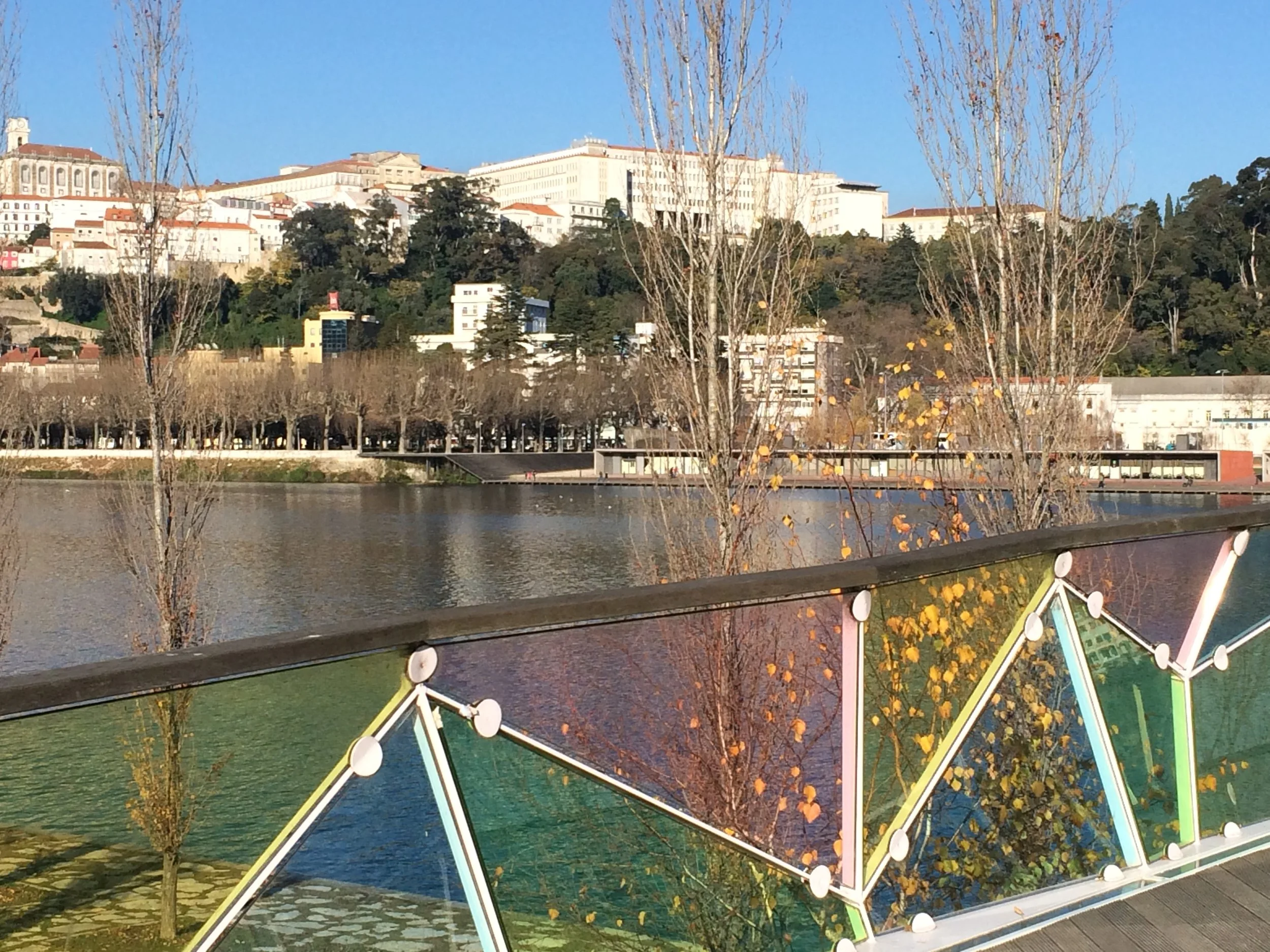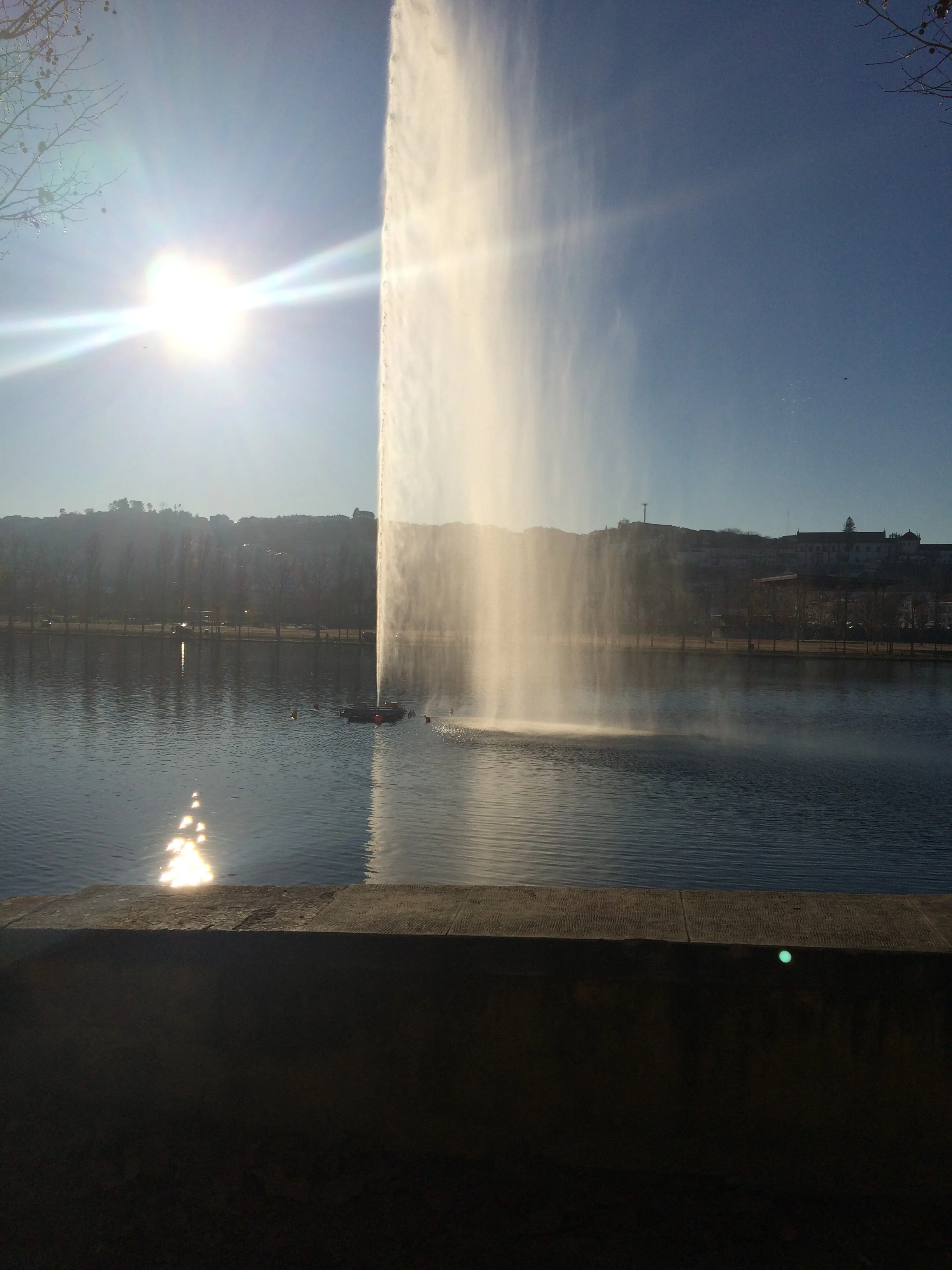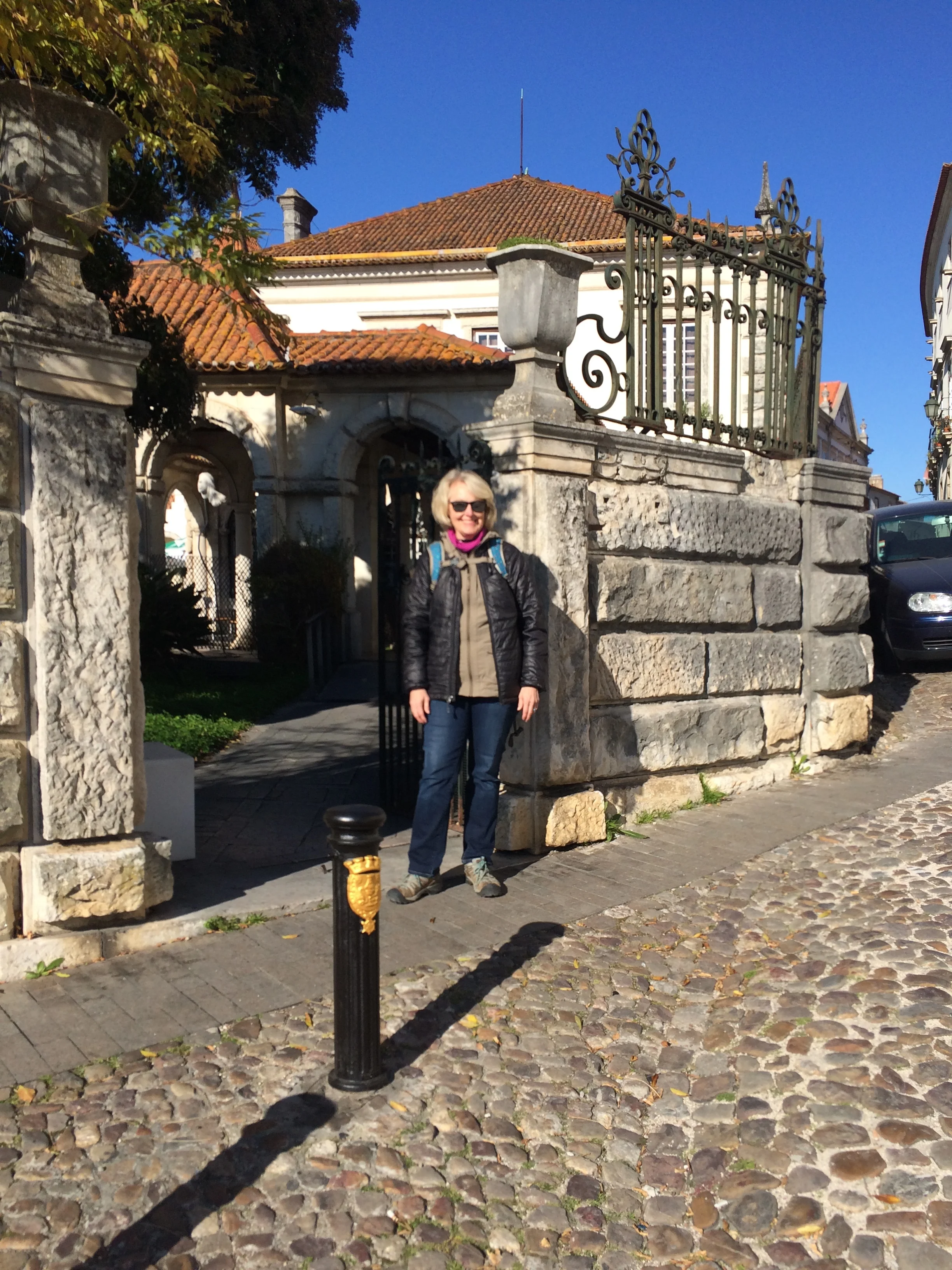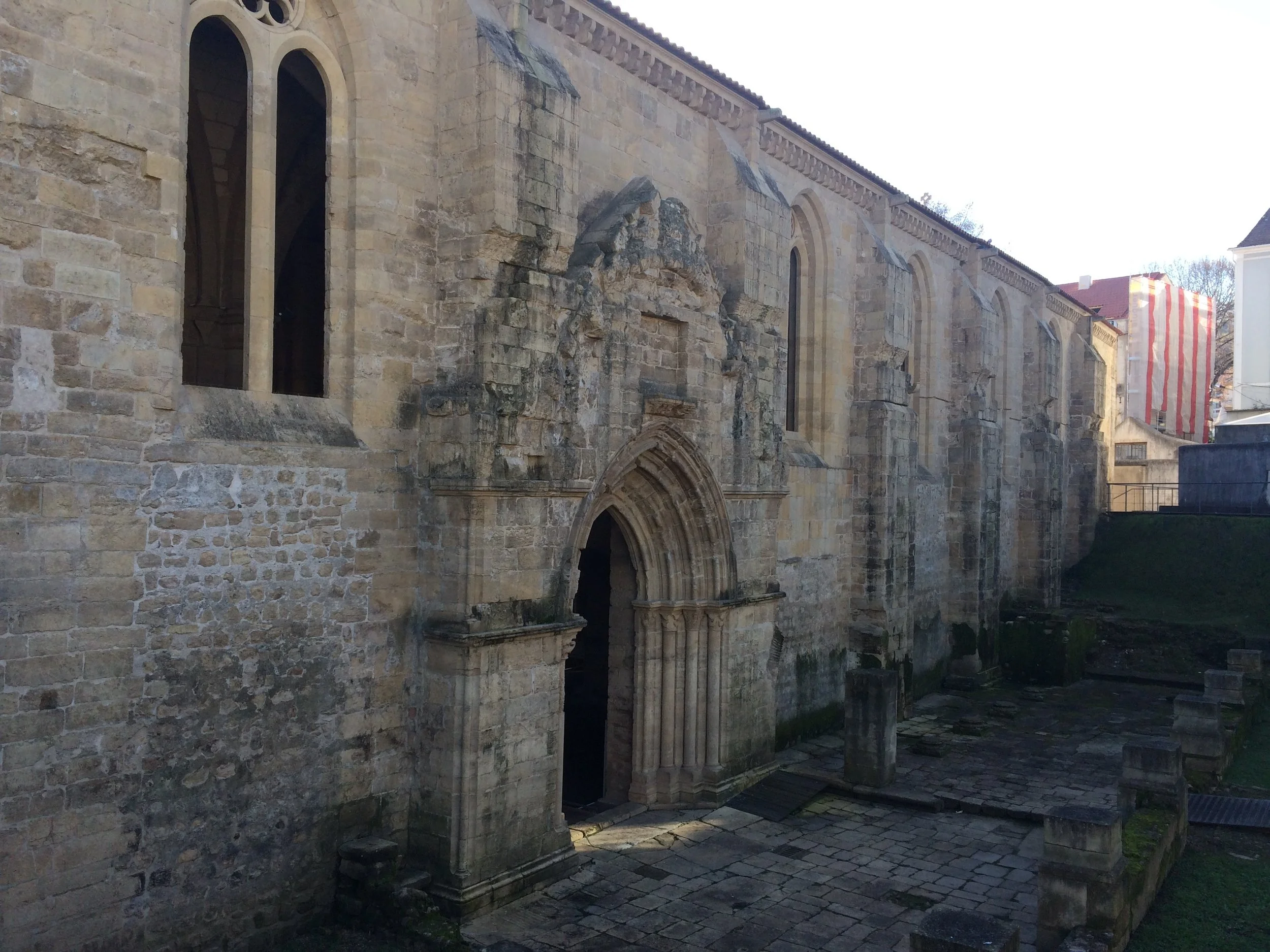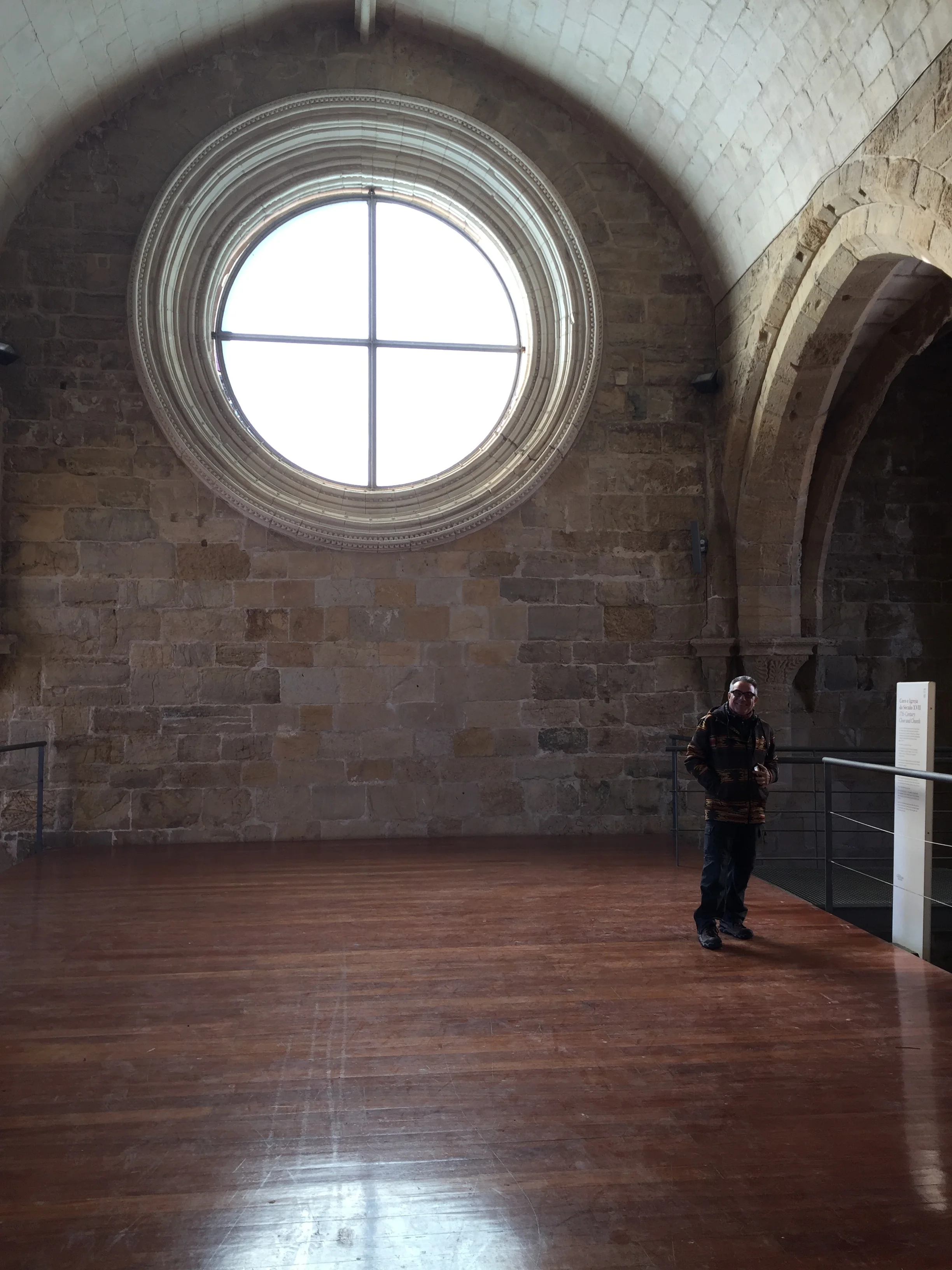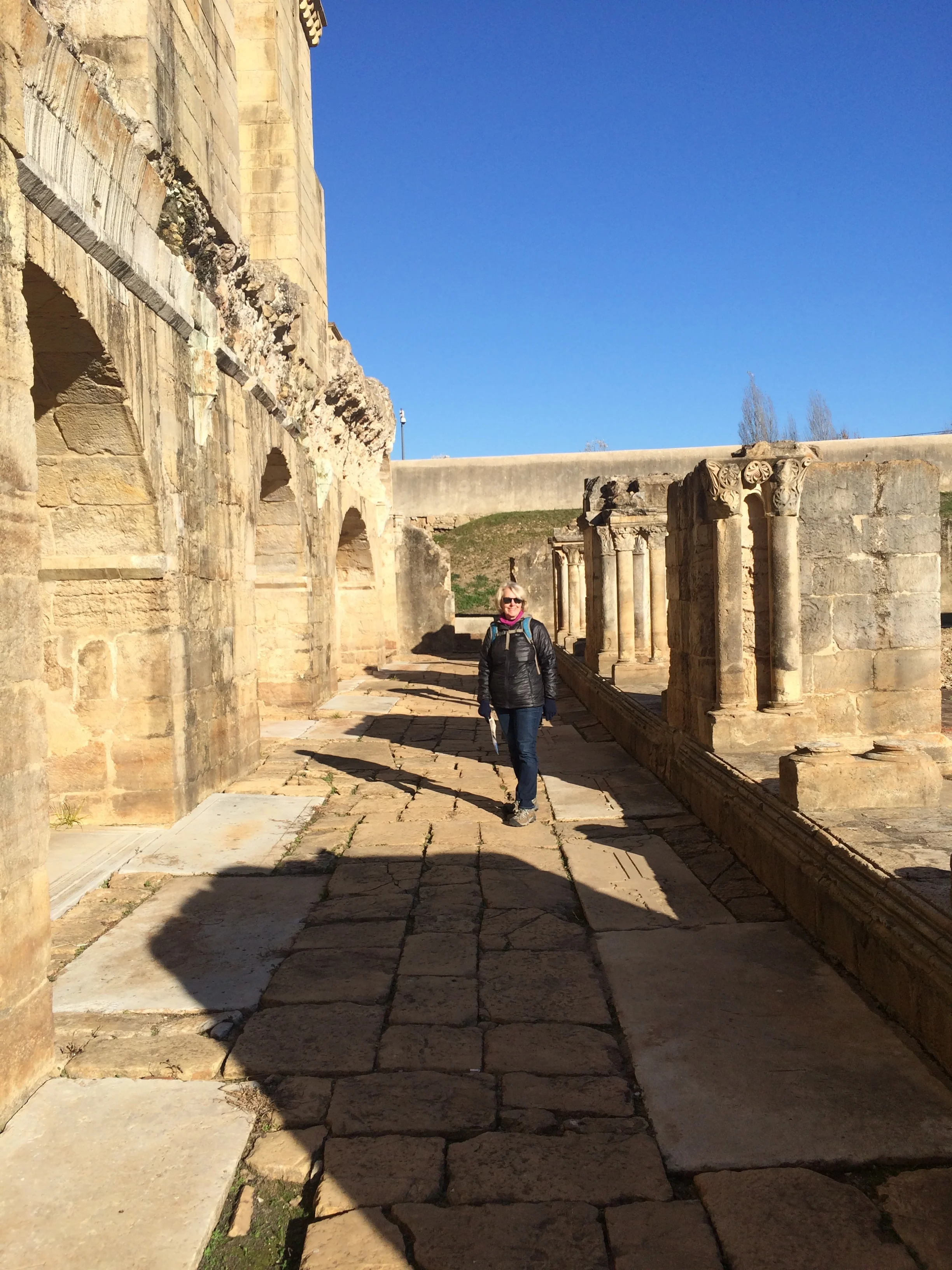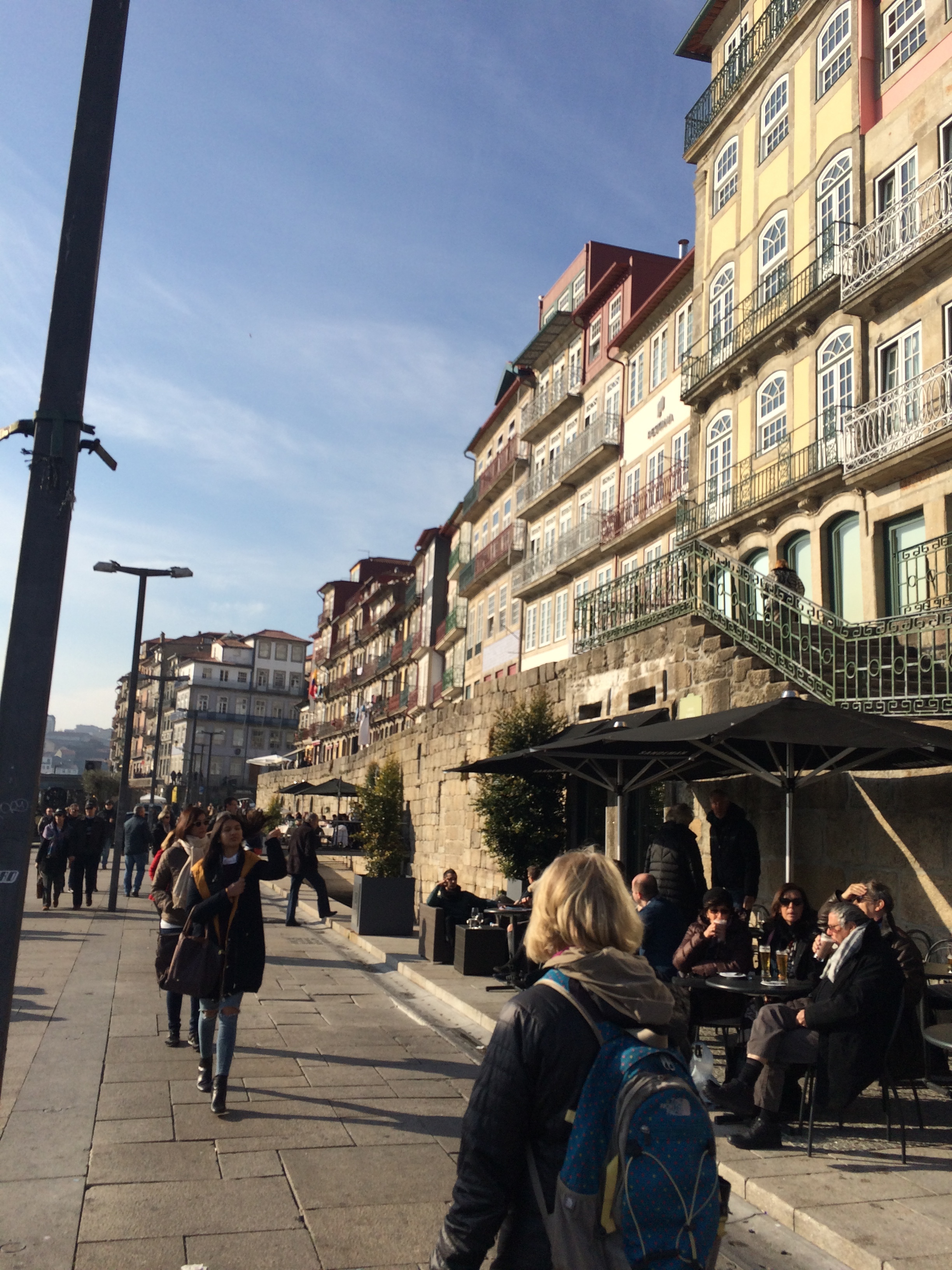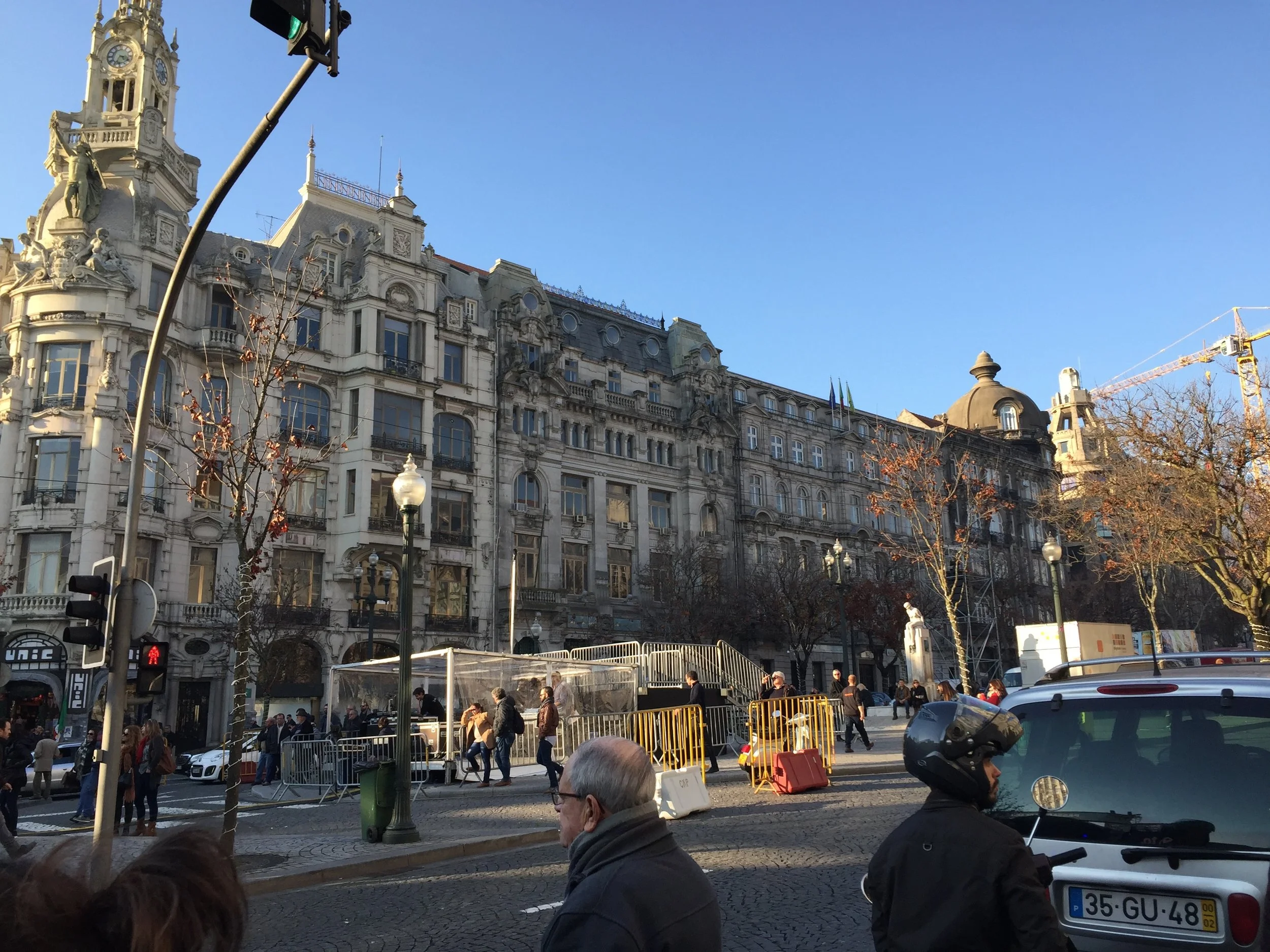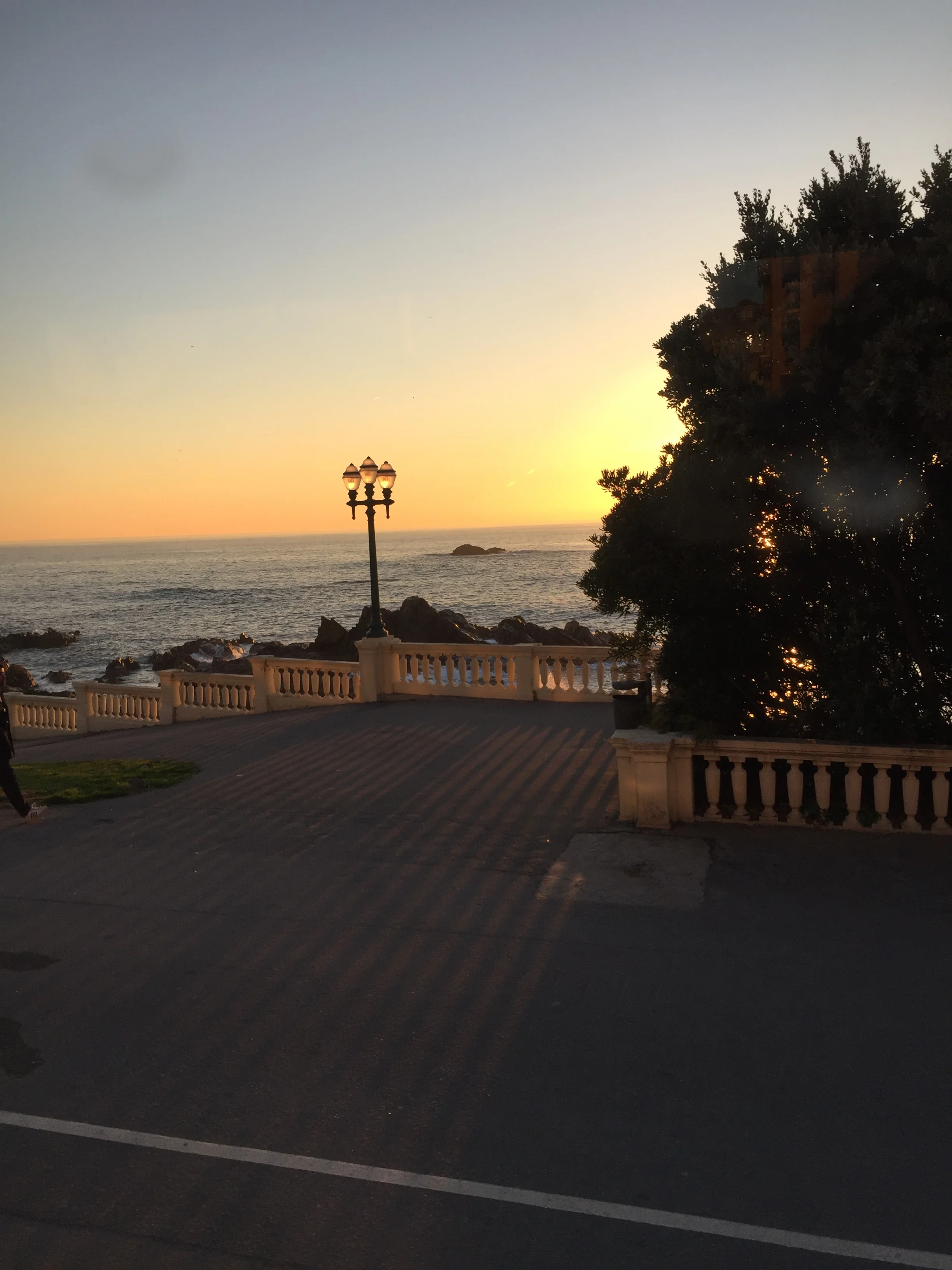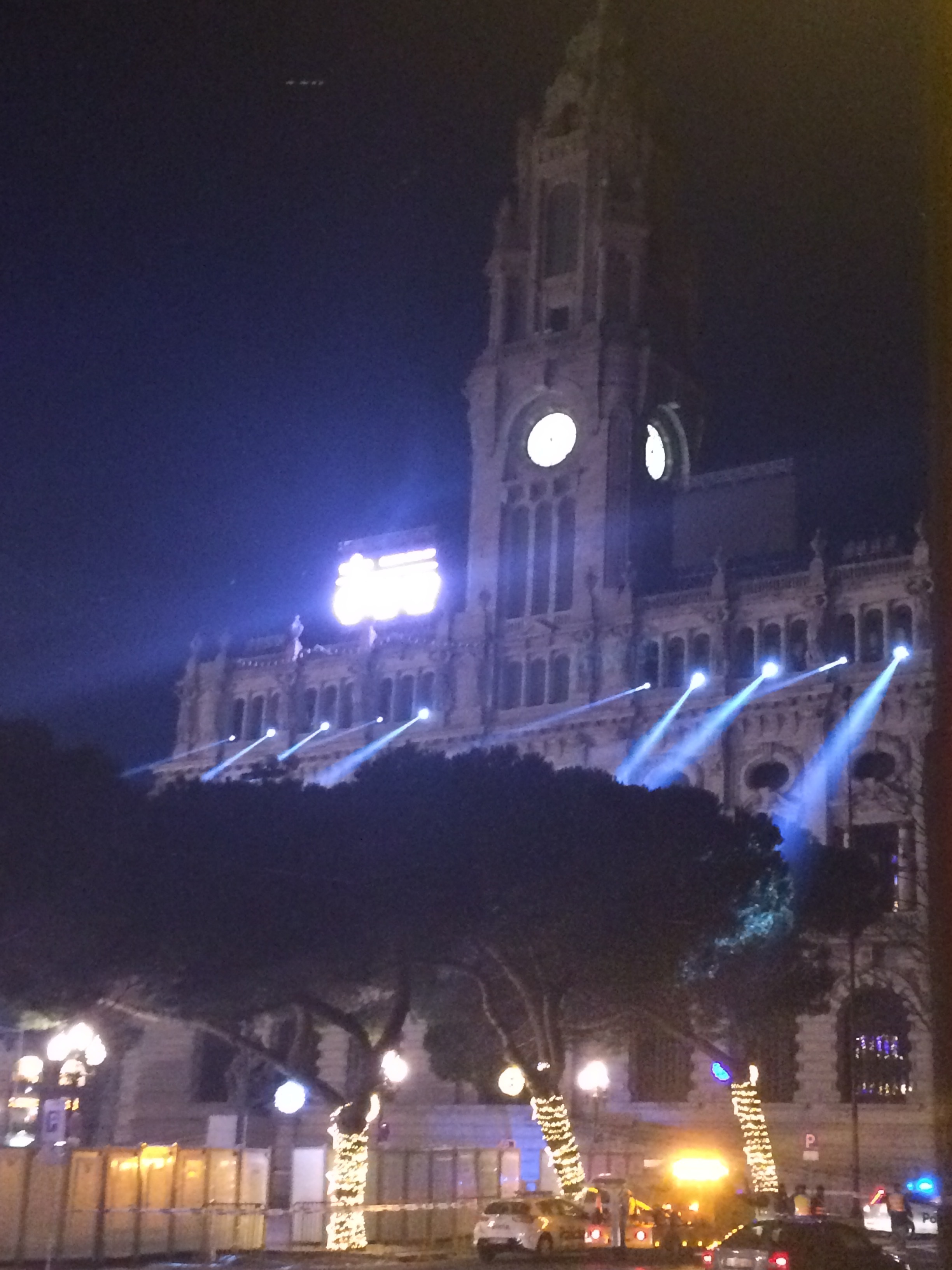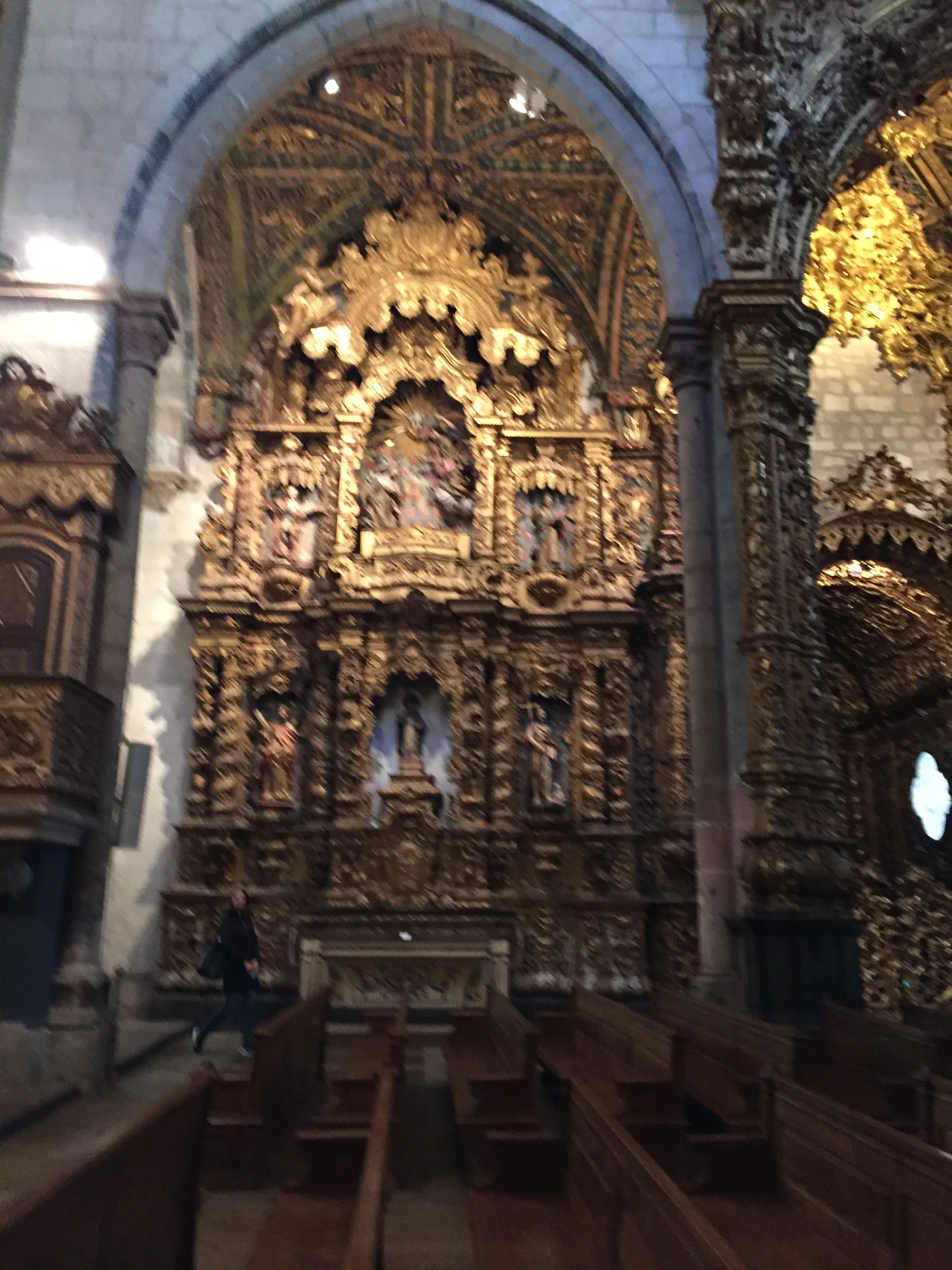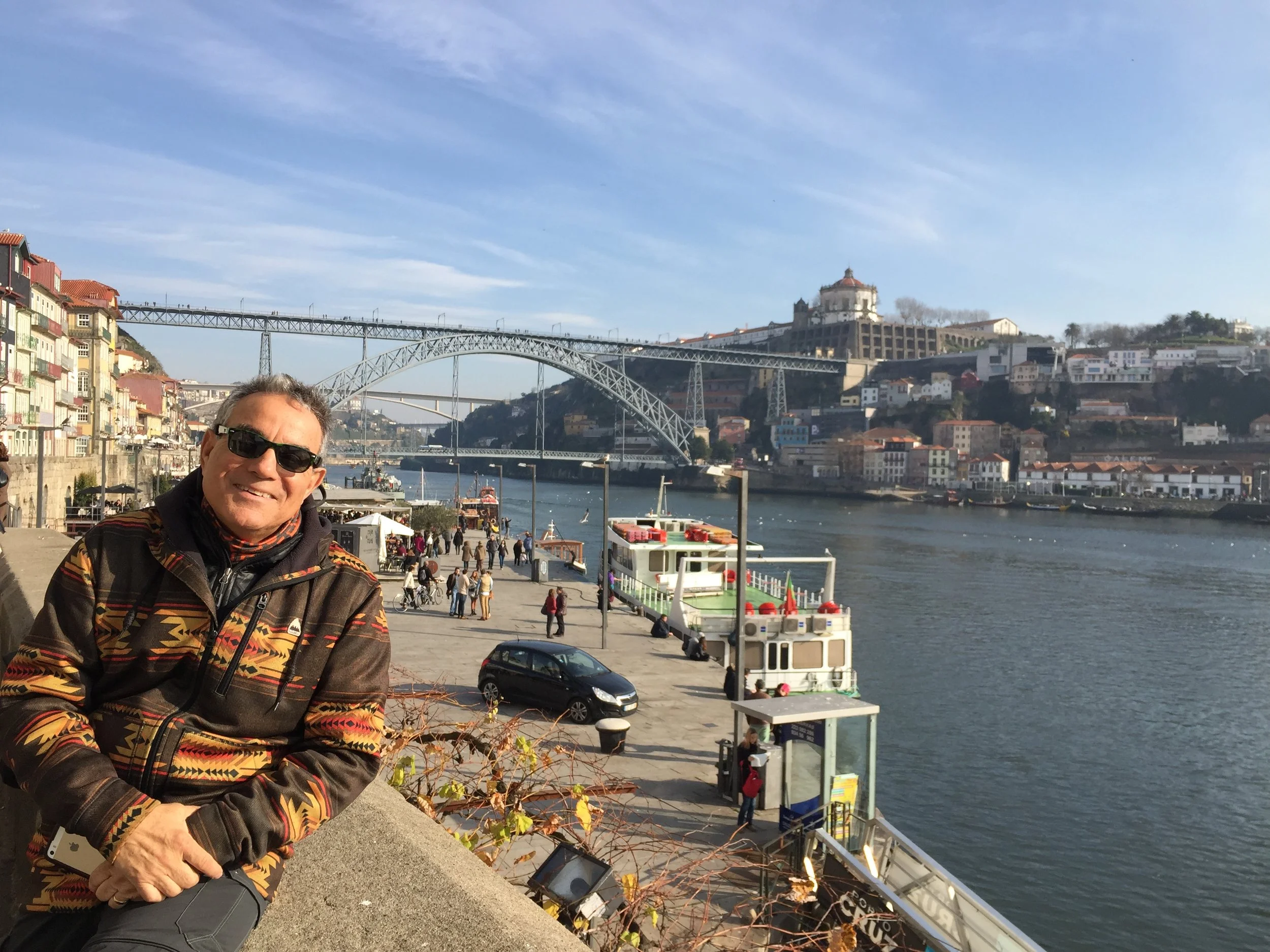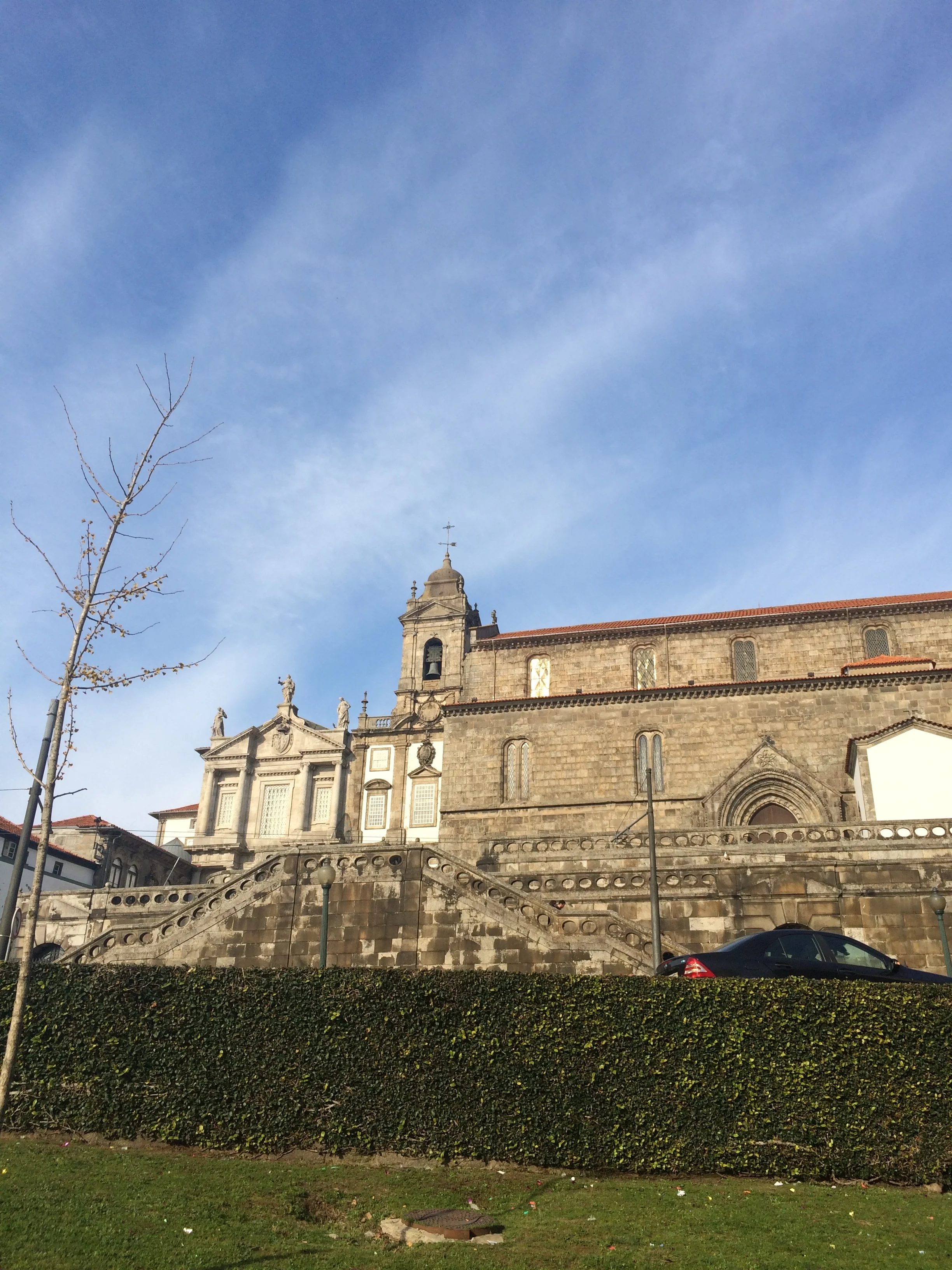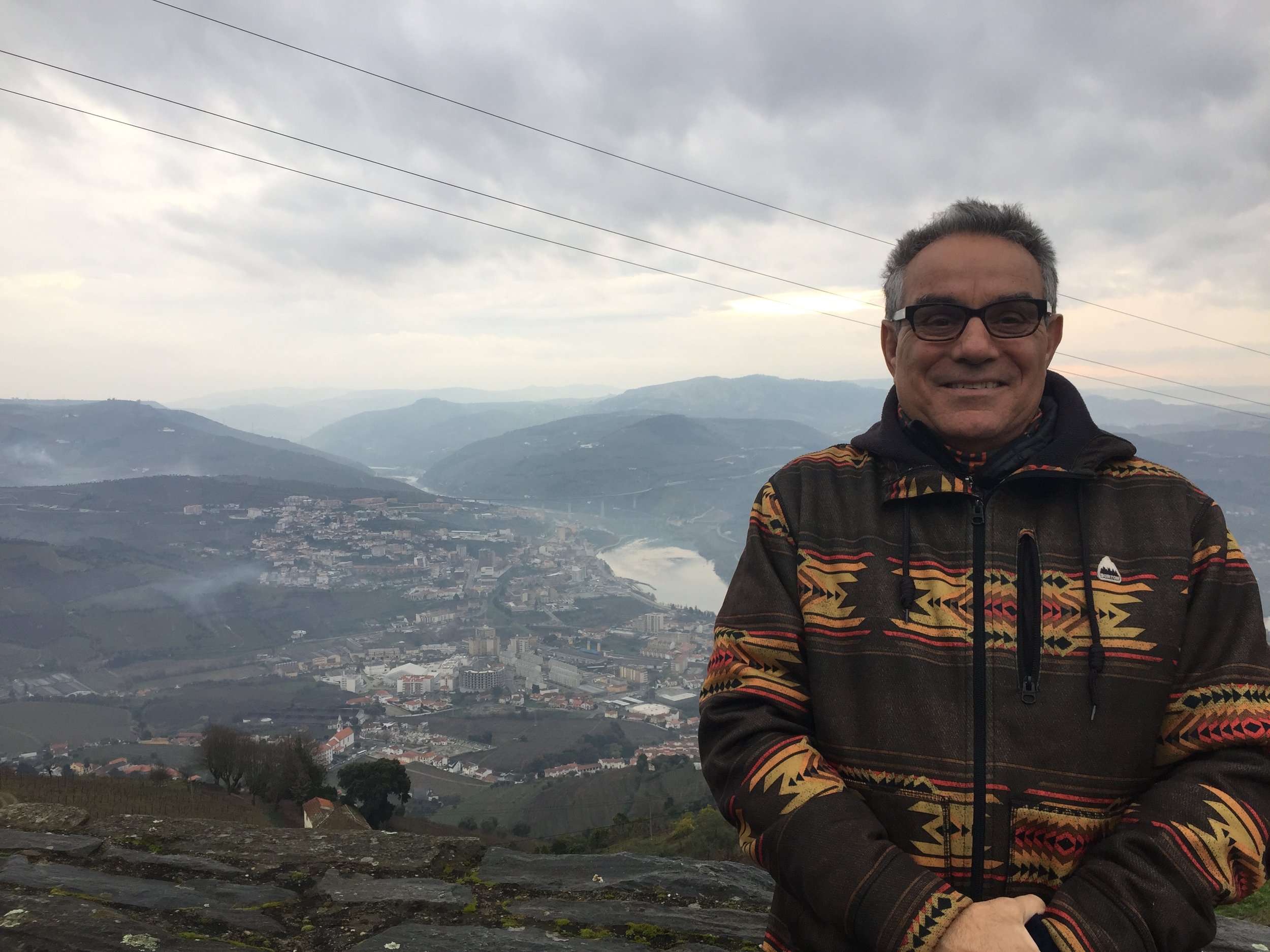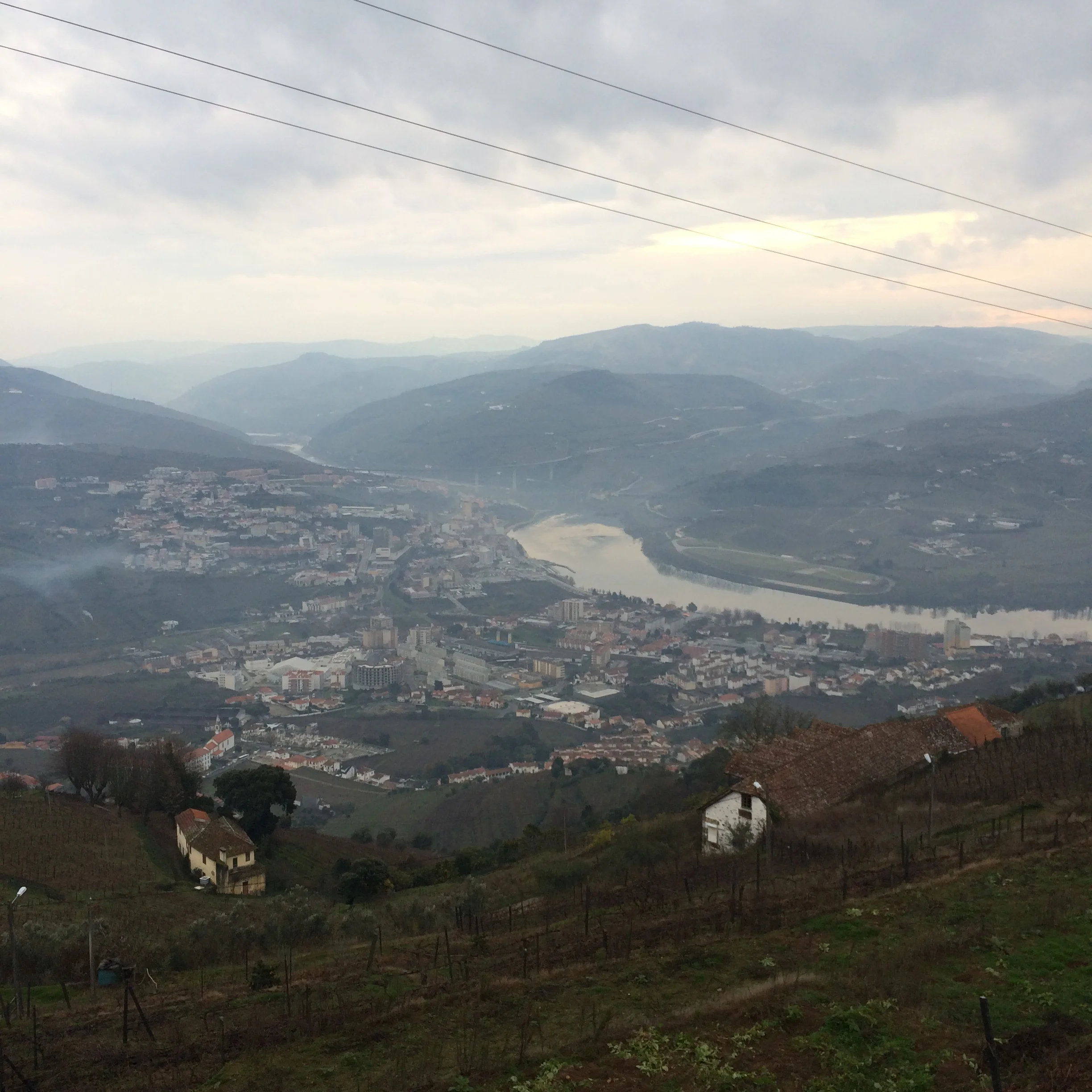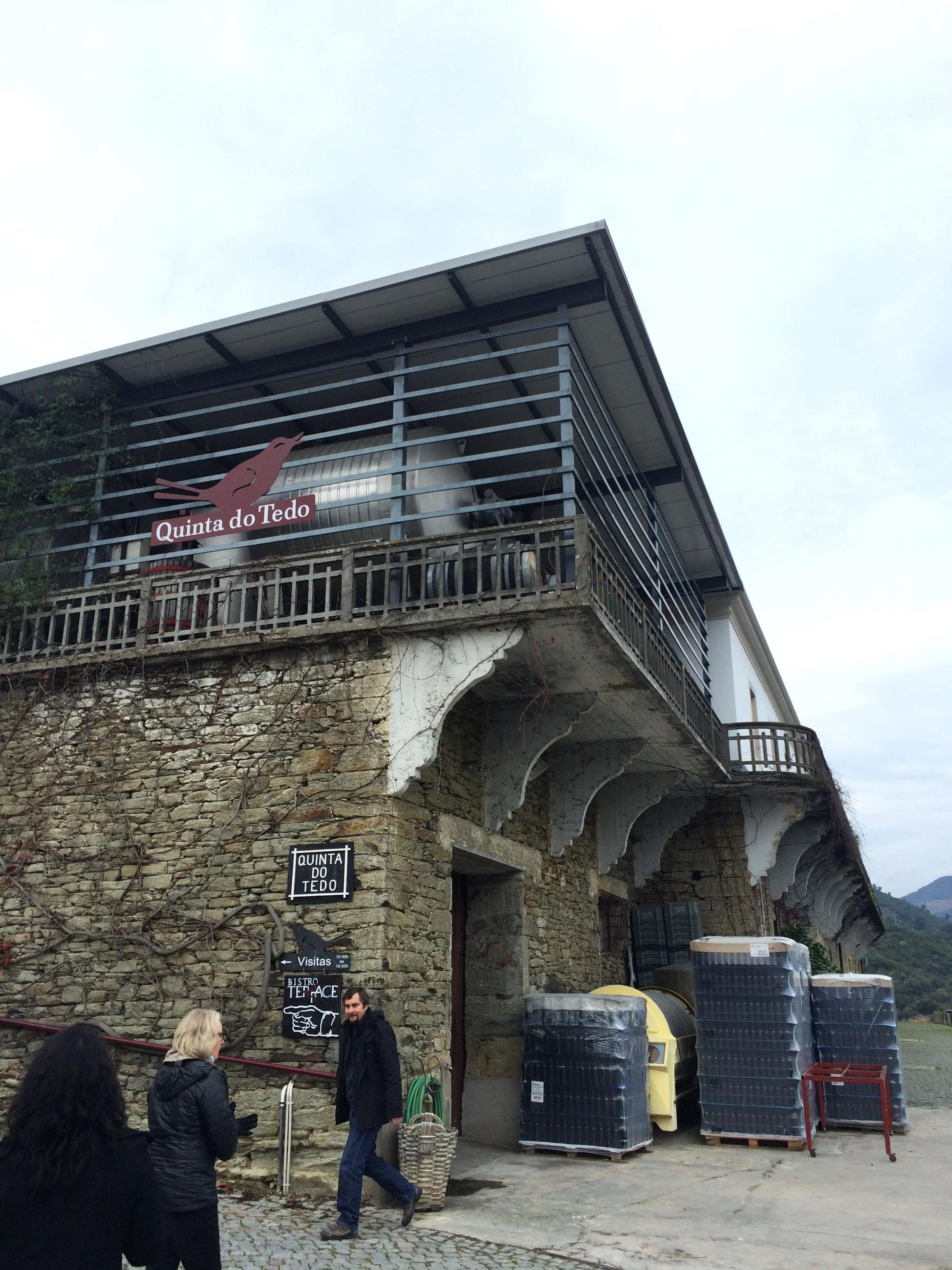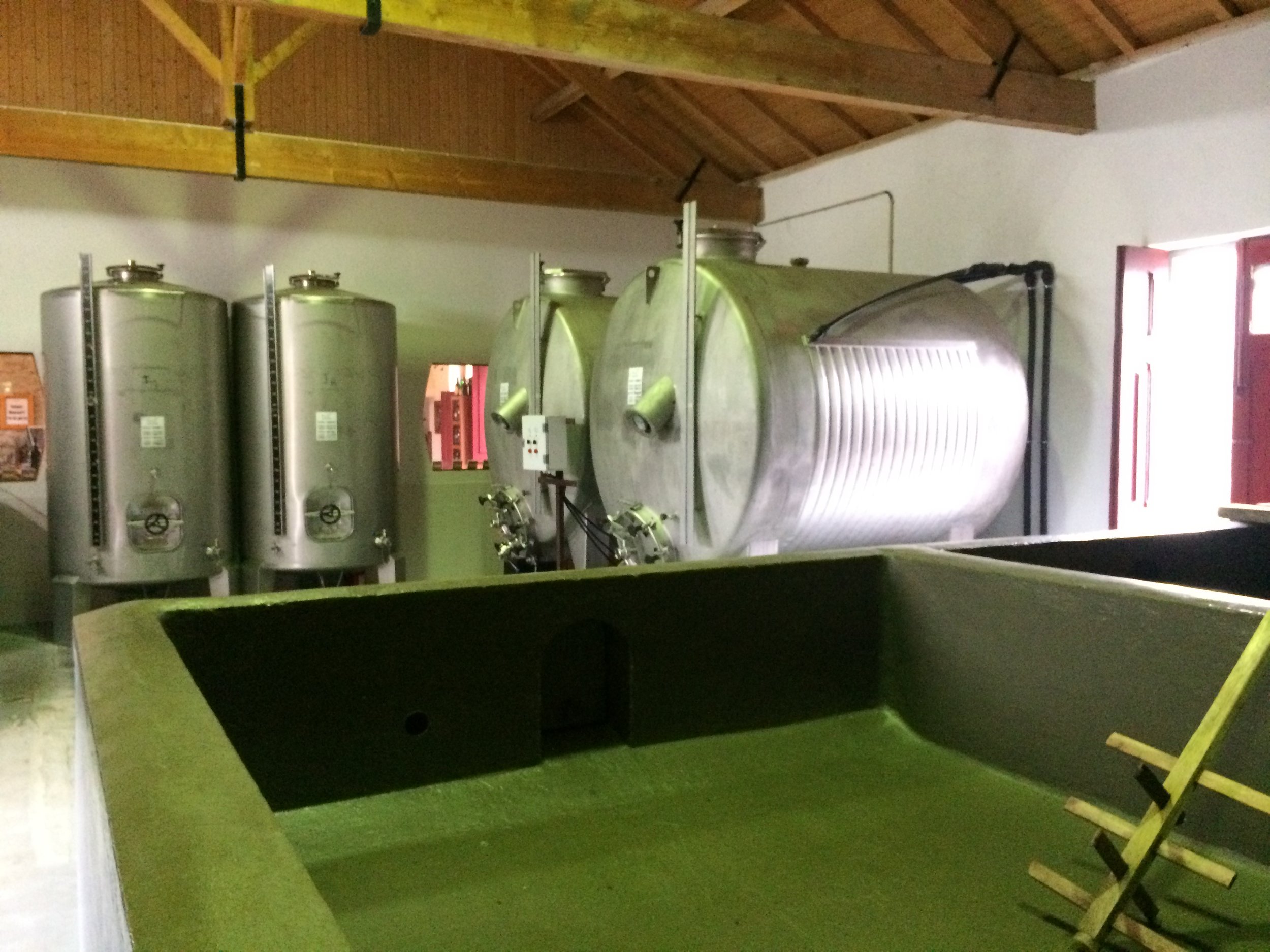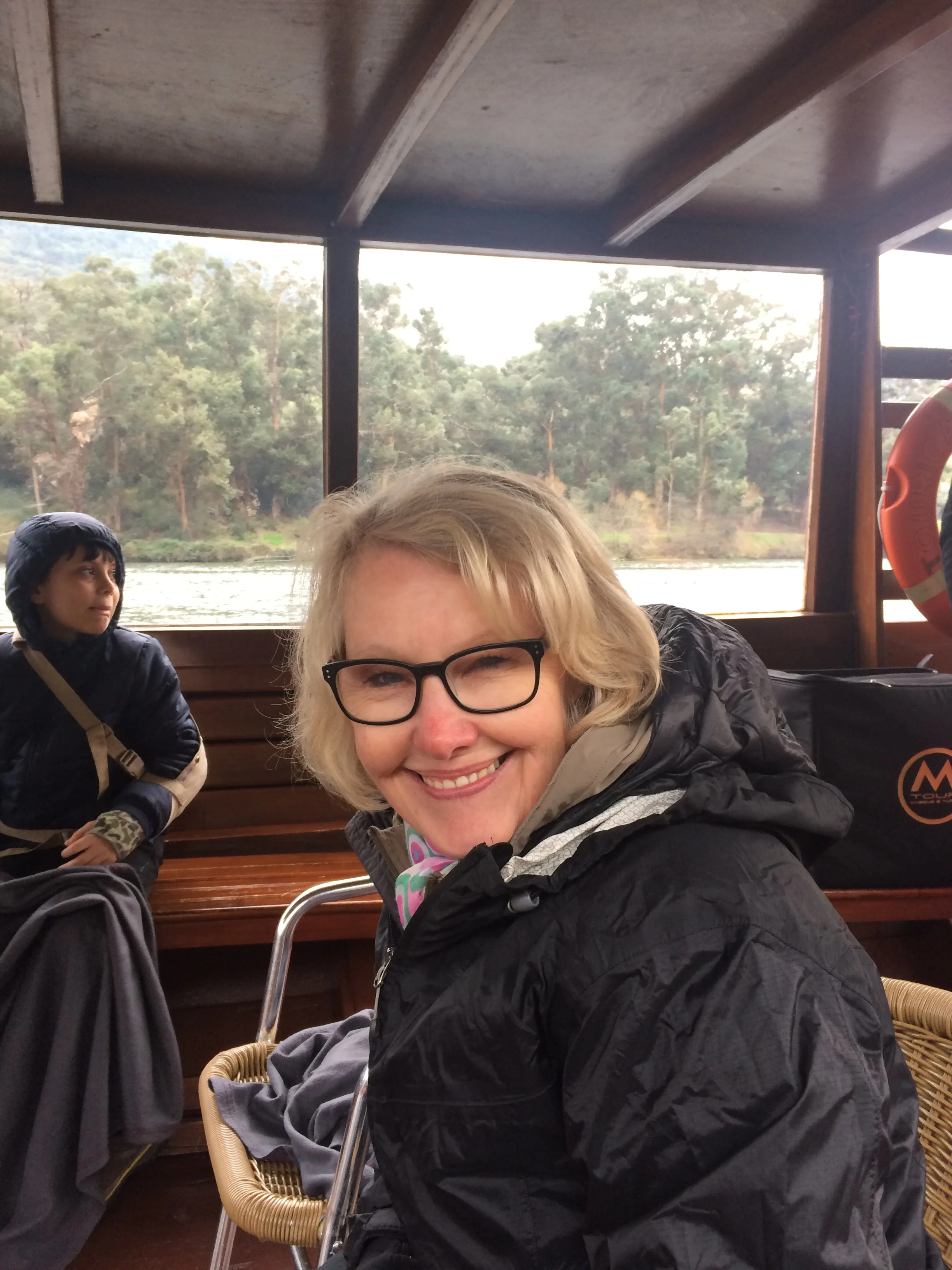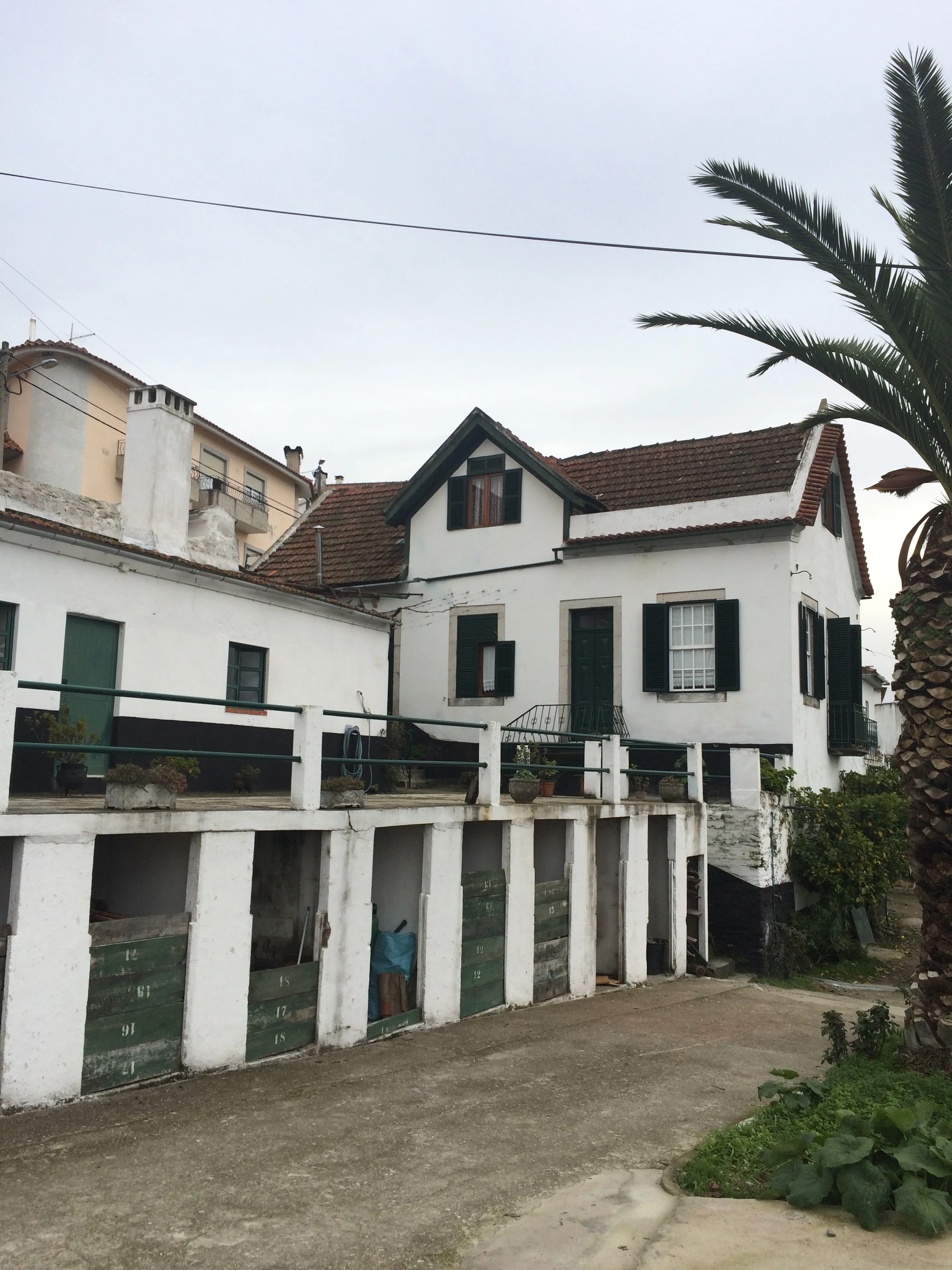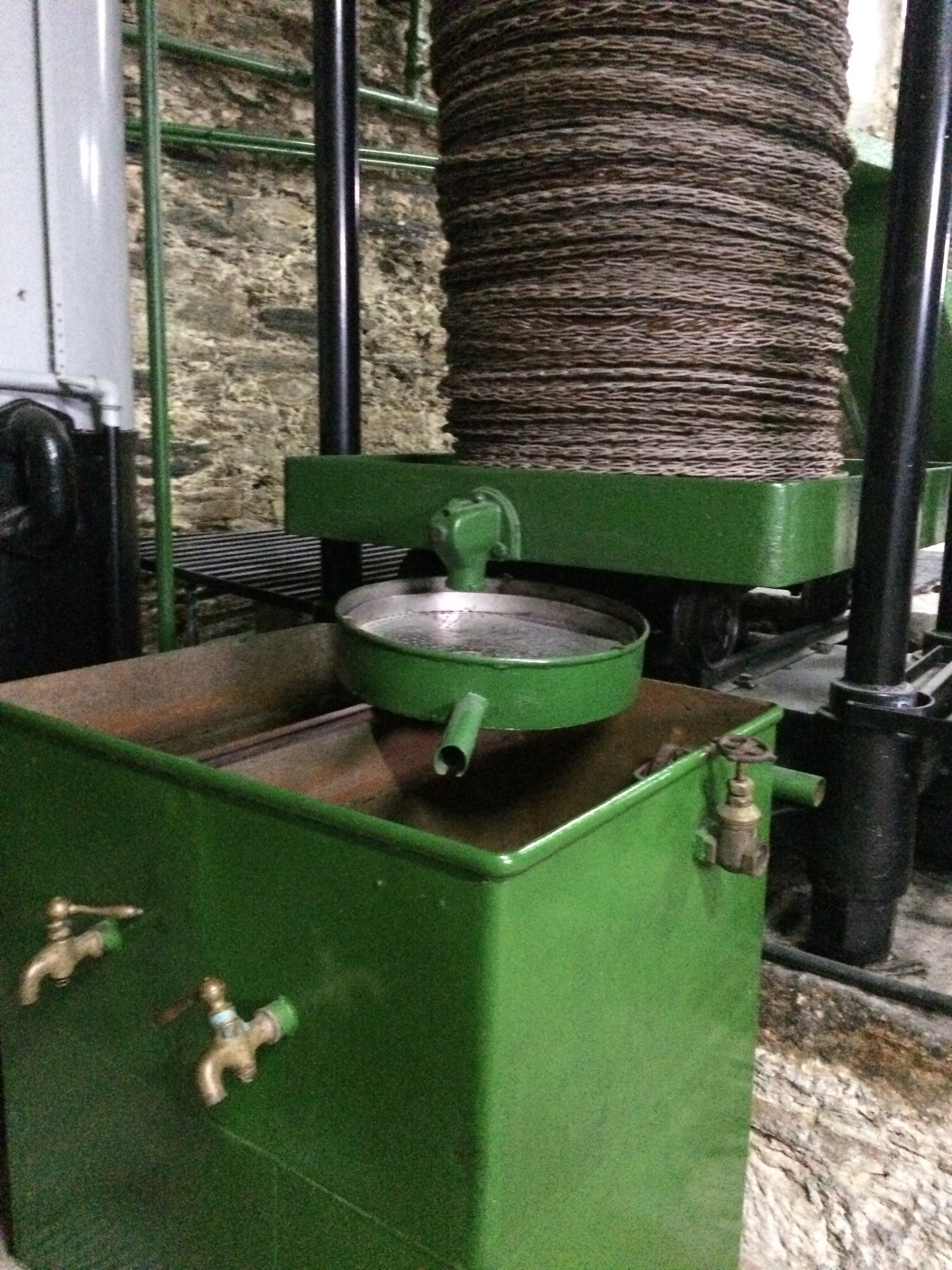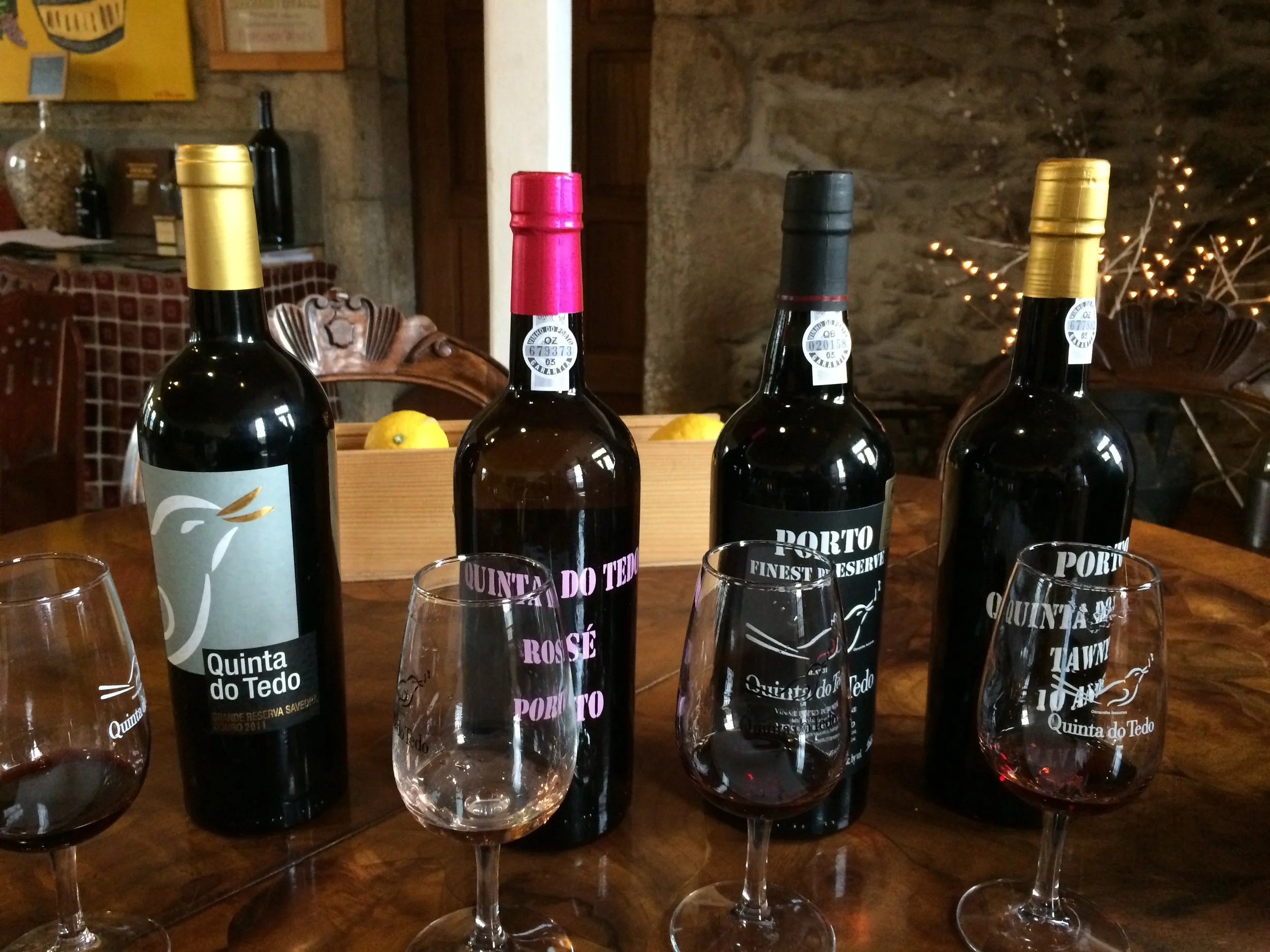Fatima Portugal
Candles lit outside
Fatima is a small town where it's said 3 children spoke with the vision of the Virgin Mary. Two of the children died young, pre-teen, the other became a nun and lived to 90 years old. This vision has been given the Vatican’s “worthy of belief” stamp of approval. Subsequently, a wondrous Cathedral with a modern look and its mega companion auditorium and its separate outdoor chapel set on the site off the vision have all been built. The city surrounds the sacred grounds on three sides. The approach to the Cathedral is all paved to welcome tens of thousands of pilgrims on holy days. Even on normal days lesser numbers of pilgrims approach on their knees on the designated path or simply walk to the various sites. We enjoyed observing the open spirituality of the visitors. In truth, it is hard not to absorb the spiritual faith of the people. The structures, icons, sculptures, and interiors of the Cathedral are transformative, bringing out latent spirituality or enhancing religious fervor. We took photos of the modern rendition of Christ on the Cross, and we were amazed to see the sun light reflected in the sky like a cross with another marking of light hovering around the Cross. Could be a photographic lens trick , but we choose to find a guardian angel. Enjoy the photos.
Coimbra Portugal
We were back on the bus again for a short one hour drive to the city of Coimbra. After dropping our luggage off at our small hotel we went for a coffee at the town square, as we looked around the square Frank commented on a small beauty parlor on the second floor, Janet jumped at the idea and within a few minutes we were getting joint haircuts, a new first as a couple, boy the togetherness just keeps getting better or maybe weird!!
Our new short hair look
Coimbra is a university town, like East Lansing. The University of Portugal at Coimbra is the oldest and most prestigious university in Portugal. The college site had flipped back and forth to Lisbon and back for centuries, but finally in 1786, the King ordered the permanent site in Coimbra on the high grounds overlooking the river and in the buildings that were the royal palace and, the Cathedral. Here the royal library still stands and is filled with ancient texts as well as newer editions that raise to the ceiling. The book binders of various colors add the the vibrancy of the mural ceilings and painted wood work. This is the most beautiful library I have seen save the Library of Congress building in Washington D.C. Apparently in the ancient stacks are protected in part by a family of bats that eat moths. The wood carvings and research tables are covered at night to combat dropping stains. Next to the library is the Cathedral of many red colors. It is also ornamental and lovely.
The original palace class rooms are large lecture halls with nice ceramic tiles and complex painting. Apparently several kings were born in these rooms which are now law school classrooms. On this hilltop campus there are buildings for Classical Studies, Law Studies, Mathematical Studies and Medical Studies. Of course the Medical and Engineering Studies have new campuses with modern buildings and equipment, and hospitals. Walking up to the hilltop campus is through the narrow winding cobblestone streets of the traditional town, now this area is used for residential housing by students and marked with political sayings and drawings. We had a small walking tour of this area and the traditional area too. Our guide was a former student at the university and very proud. As well she was involved in a preservation group for this area. Our fellow travelers where tourists from Connecticut who were fun to be with. We shared some roasted chestnuts and dinner tips, and one was a college professor in Connecticut. We bid them goodbye.
Tapas Dinner
The winding hilly streets are vibrant, full of hotels, shopping, and restaurant.
We had two wonderful dinners in Coimbra. First was a romantic tapas house, professor’s suggestion, where we sat in the window and had wonderful wine. The second restaurant was the ultimate in traditional found by Janet. It was small with only 25 seats you had to stand in line to get a place. We missed the cutoff the first night by 3 people, but we were so intrigued we came back the second night early. We were first to arrive at the Mendel restaurant which is actually about 12 tables set up in a crowded kitchen. That's right, you sit in the kitchen while host Marino takes the count, directs you to your assigned table and then helps you with the menus and his special suggestions. We sat in an alcove which was decorated by messages written on napkins taped to the wall. Most of the place was the same. We got a cheeses course with breads and pitcher of red wine while waiting for our 2 dinners to split, starting with rice and beans mixed in a croak with pork chops and greens, and then cod fish with seasoned potatoes. The dishes were very tasty, and the added charm was the minimalist cost charged. We were decidedly full and left to get coffee and dessert sometime later at another shop.
At the foot of the business district is the river Mondego with a wisely planned park side promenade on both sides. We crossed over the river on foot bridge and walked to the Convent. This Convent was covered in mud and recently excavated to observe the grounds, foundations, and most importantly the Cathedral which is in partial ruins. The convent and cathedral was first funded by a wealthy woman but after stalling by the Vatican, later funding was directed through Queen Elizabeth of Portugal See river pictures below
Now, there is a small but modern museum on site that makes the investigation worthwhile, but more fun is derived from walking through the various floors and levels of the cathedral. Coimbra is really a neat little town. See pictures below of the convent ruins
Porto Portugal
Another day, another bus for another hour. Off to Porto for New Years Eve. If Lisbon was great for Christmas, then Porto was the place for New Years. PARTY TOWN. Porto is a large river side city, the second largest in Portugal with 208,000 people. Luckily, our Airbnb was only 4 short metro stops from the city center. We bought two tickets, but never used them as no one was checking. When we entered city central by the train station, we viewed the really fantastic porcelain tile murals of the station that were enormous, depicting intricate and large battle scenes and other murals of traditional life. We signed up for the on and off bus.
While waiting for the bus, we stood by an erected music stage set up for New Years Eve, and listened while the evening bands did their sound check. We really liked “Blind Zero” a very popular local band. Rock and Roll for Frank and Janet! We later saw fire works from our apartment.
The bus service took us on a 2 hour ride of the city with long waterfronts on two sides of the river. We saw the Casa de Musica, the orchestra house designed like a giant rectangle torqued up on its sides, an award winner. We then traveled the main or first waterfront and also an up scale area, like a cross between Grosse Pointe Michigan waterfront and Santa Monica Pier, where the sunset is stunning. We saw the Porto sunset there. The main waterfront is older, traditional, and fun, with restaurants and bars and outdoor cafés at the water edge on a wide cobblestone promenade. As you drink from your seat, you can look upland and see the wonderful ancient castles and cathedrals of the original city.
The Cathedral of St. Francisco was entirely decorated inside by gold leaf wood carvings and is a national monument. It was wonderful. Remember, the past government nationalized the church properties, here also, riverboats leave for a quick trip down the river, which we took and enjoyed a view of the historic waterfront buildings and the six bridges that cross the river to allow land traffic. One bridge was designed and built by Eiffel, the Frenchman. As well across the river are all the historic and still functioning wine houses. Porto which means “port city” was historically the place where “Port” wine was developed, barreled, stored and shipped. The old and famous port wine houses on the river such as Sandeman, Clemans, Porto Cruz, etc, etc. still operate for your pleasure. We went for tastings. We are Port wine fans now. We think if you want to party in Portugal, go to PORTO!
The Douro Valley
We did not want to end the Port wine motif of our trip. The next day we took a winery tour of the “Douro Valley” region where the best grapes and Port wines are created. Our companions were all from Brazil vacationing here for the Holidays. With our recent arrival from Brazil we hit it off as they spoke English very well and you know, Frank and Janet can interact too.
Our traditional lunch
The valley with the Douro River and other tributaries running through, along with the carved terraced fields and grape vines in the Valley are spectacular. The colors and shapes and reflections are simply gorgeous, and we had little sun. We stopped at two wineries surrounded by vineyards. The first was small and now owned by an Italian man who married and an American women from Sonoma Valley, California. We were introduced to the processing areas and instructed as to the art of Port Wine making. The winery was called Cruz and you could enjoy Bread and Breakfast there. We had a wonderful tasting and we decided to purchase a Reserve Bottle of their Port. We chose “Tawny”, rather than the white, Rose or Red. You don't have to be an expert, just taste and your palette will tell you immediately what you like. That is what you should buy.
We went to the second winery, with a more spectacular river and valley view, and we were able to taste their wines, virgin olive oil, and honey, no Ports. In any event, the Rose touched our fancy along with the wonderful olive oil. The tasting house was a modern glass structure overhanging a cliff. We looked around and jokingly tried to figure out how we could convert such a space into a vacation home some other place, or maybe this place. The popularity of Portuguese Port Wine really took off with the demand of the Scottish and Brits in past centuries. But fungus attacked the root systems, so fungus resistant grapevines and roots were Imported from the good old US of A. For a long time, some of the largest vineyards, about 500 Hectares, in the Douro valley are owned by Scots. The wineries are developing more rose Port wines, with lighter taste, to market to younger consumers. We say “Forget Cognac and its liquor taste—drink sweet Port Wine”! We also say “party in Porto”.
